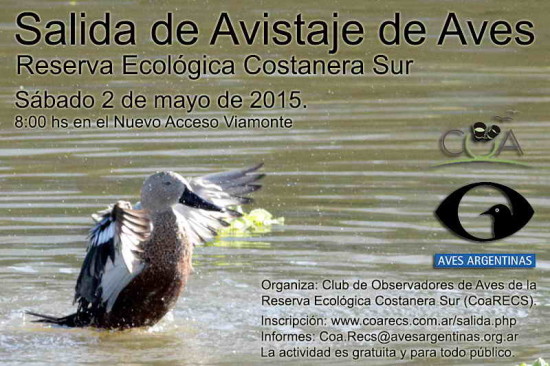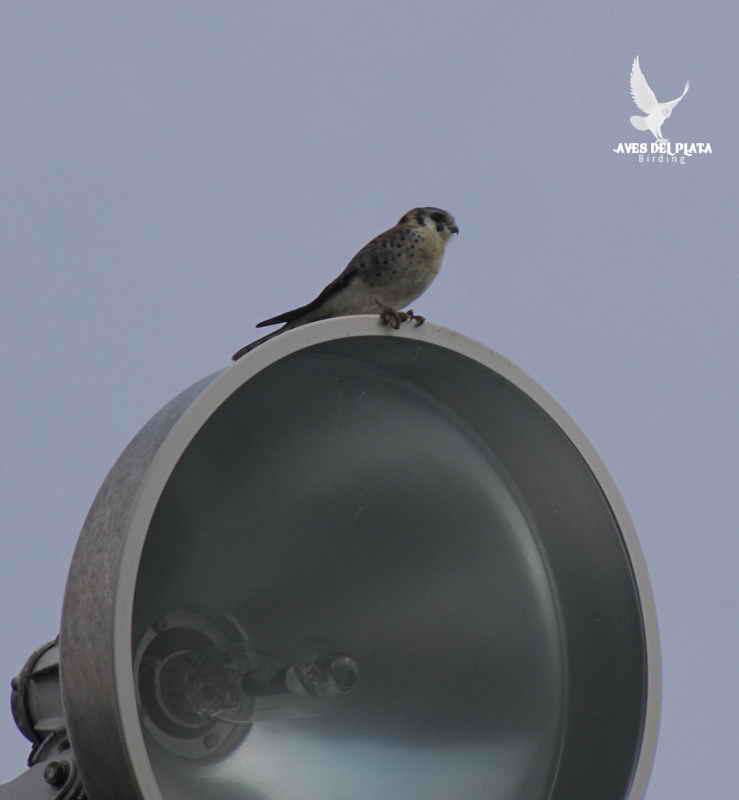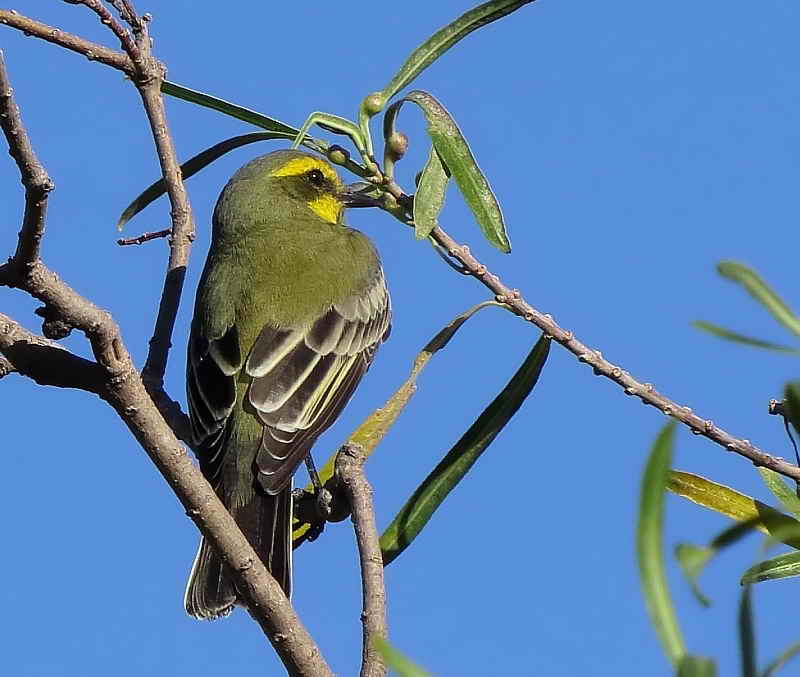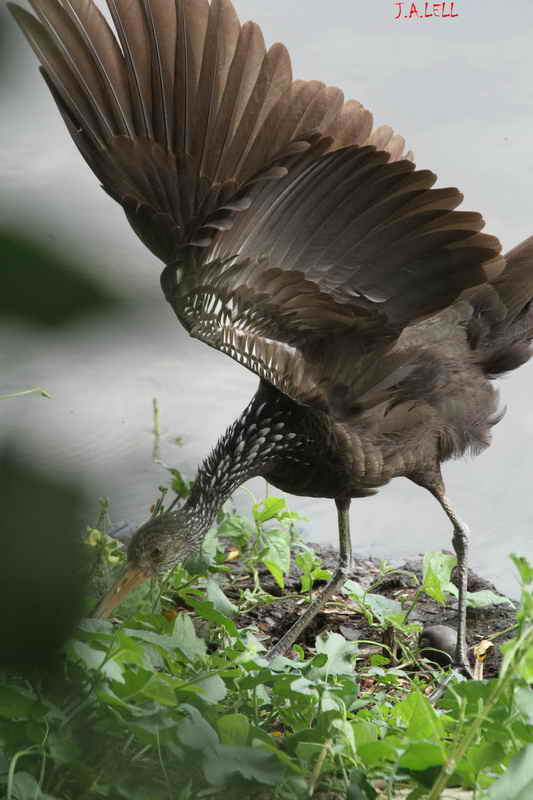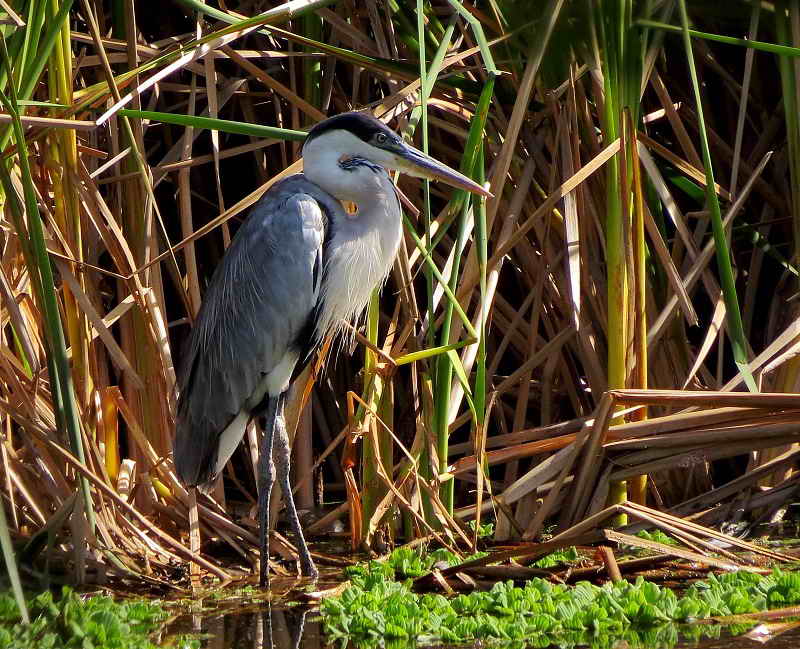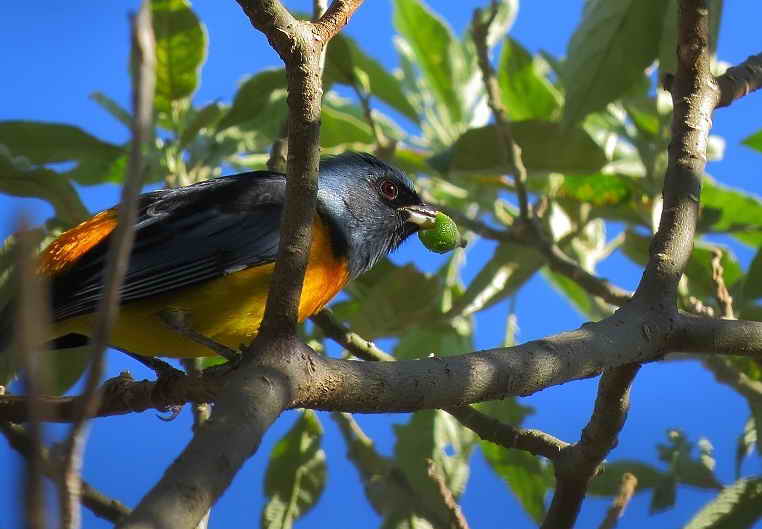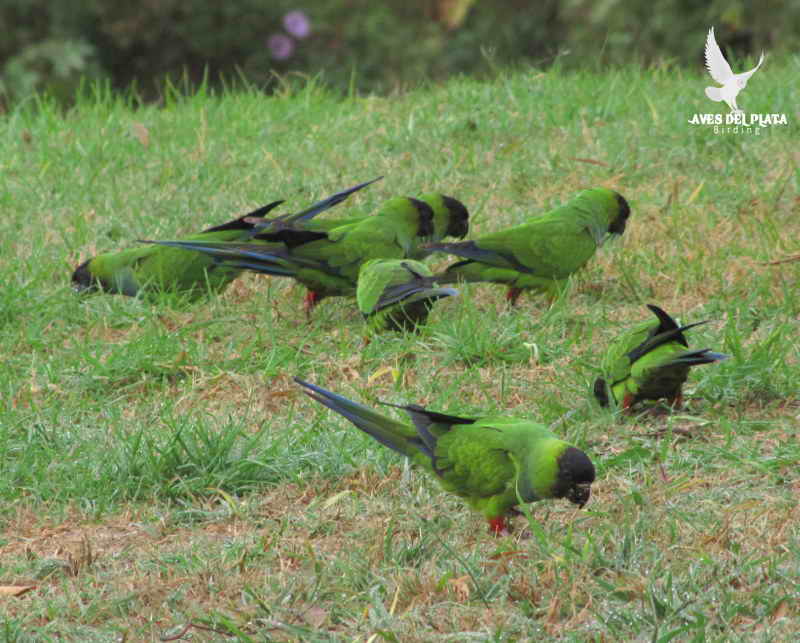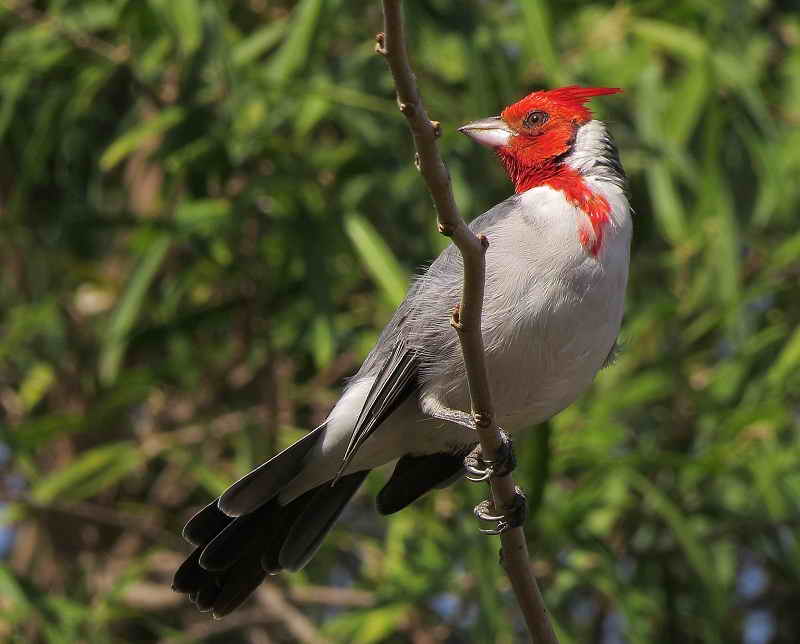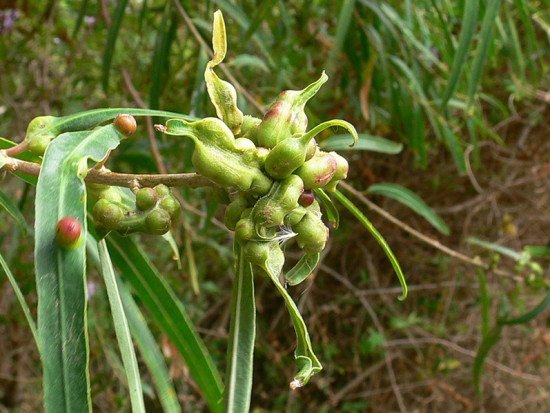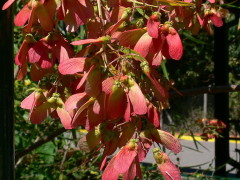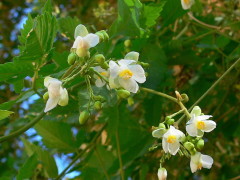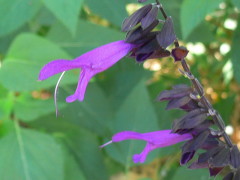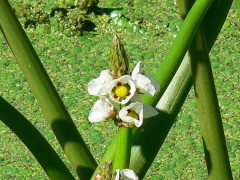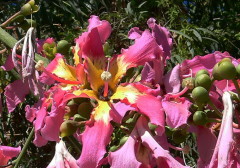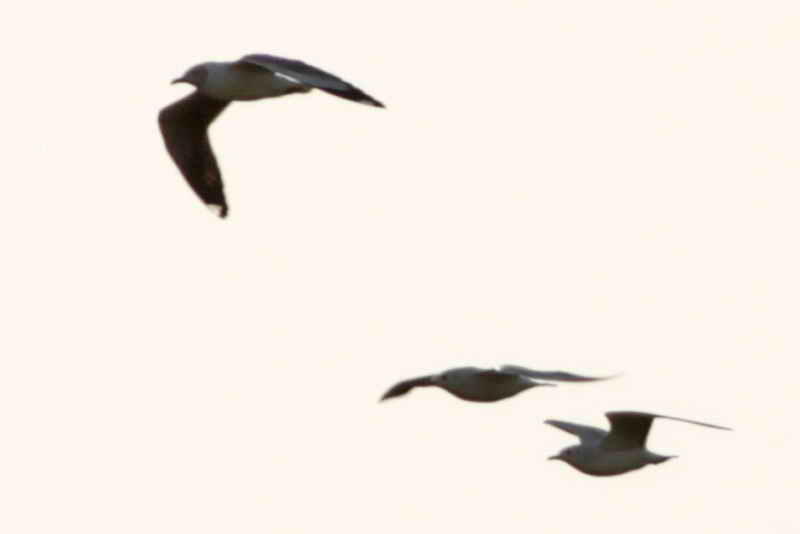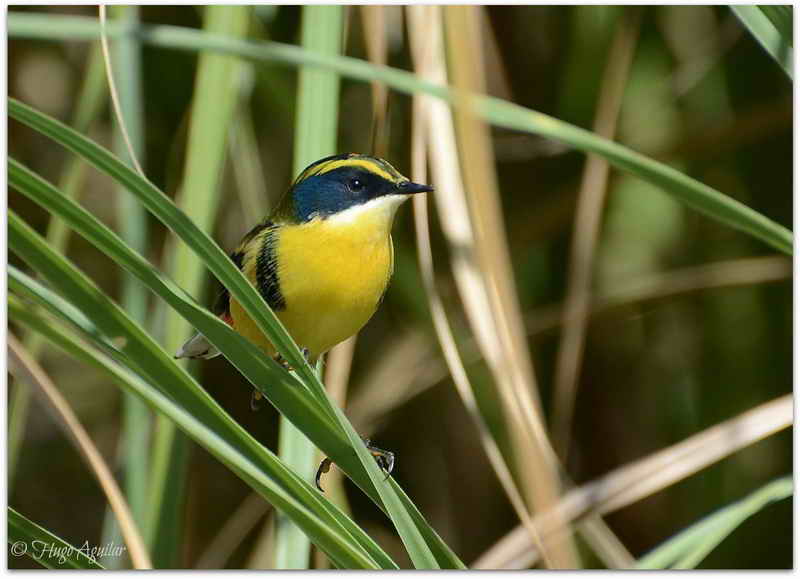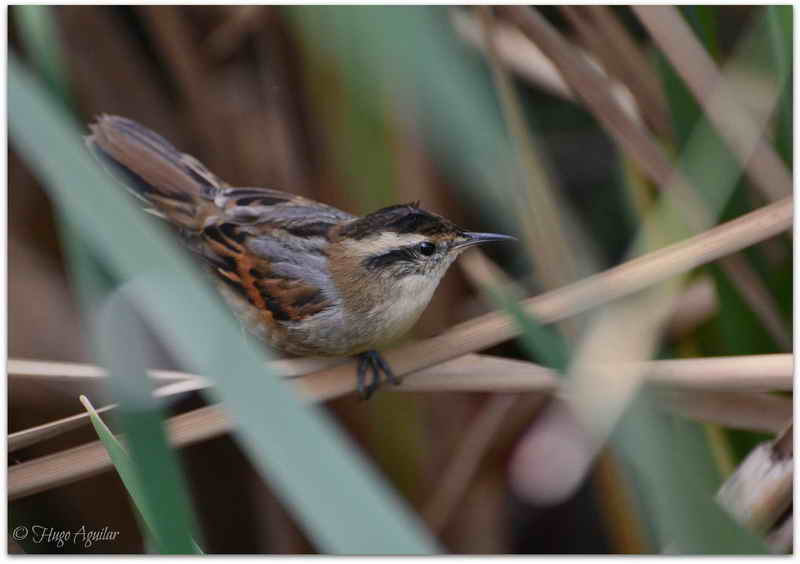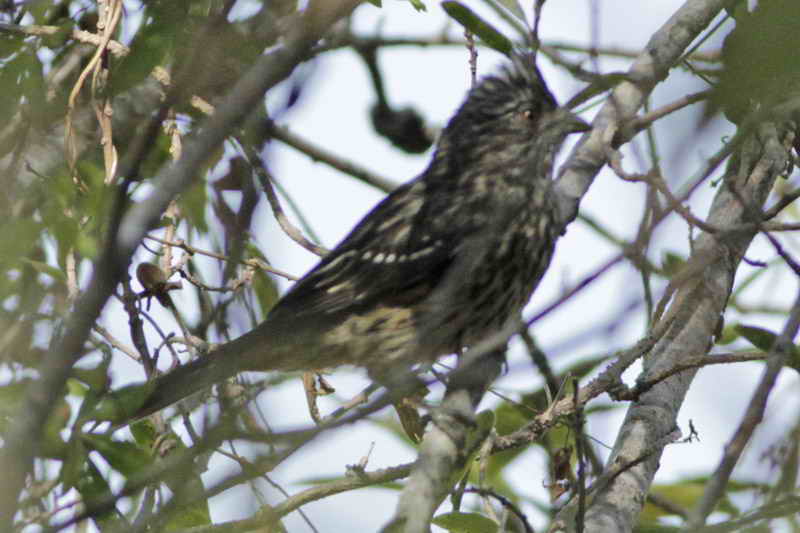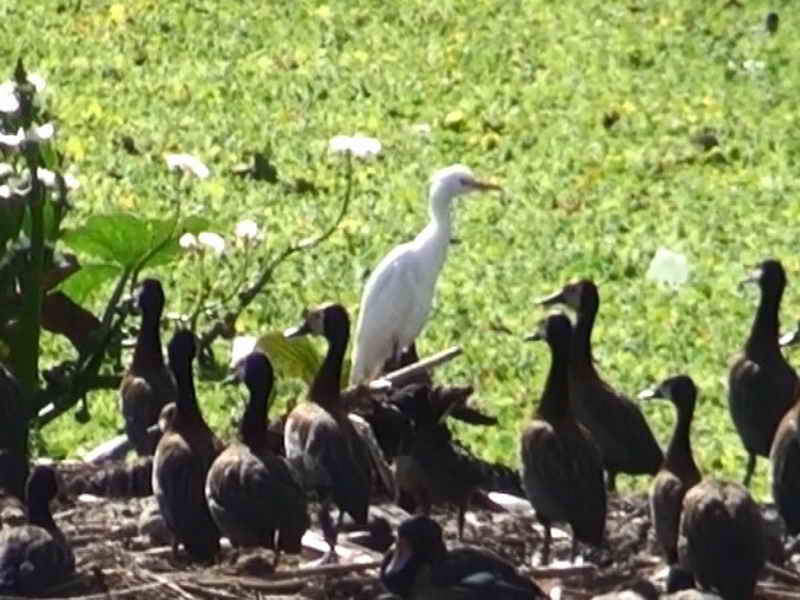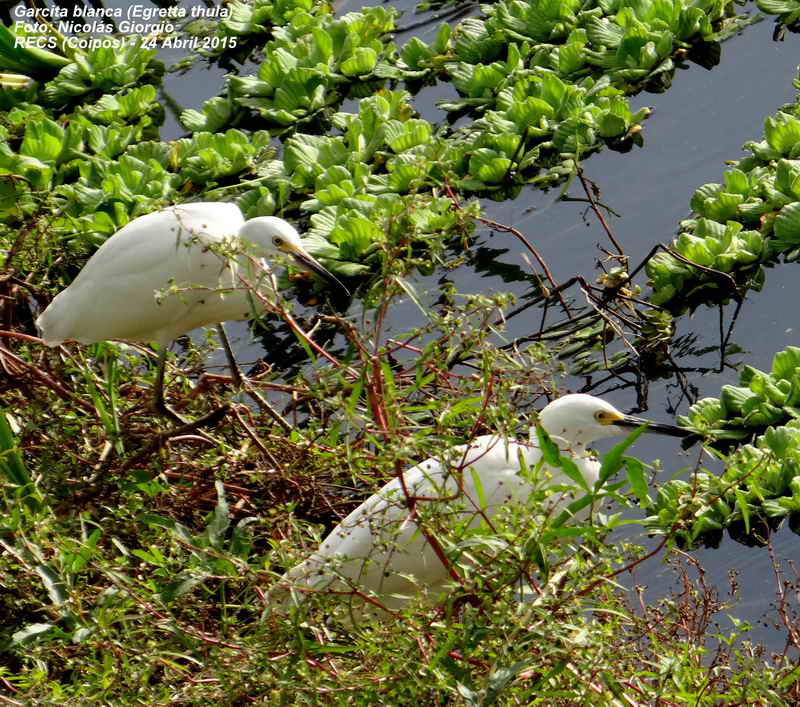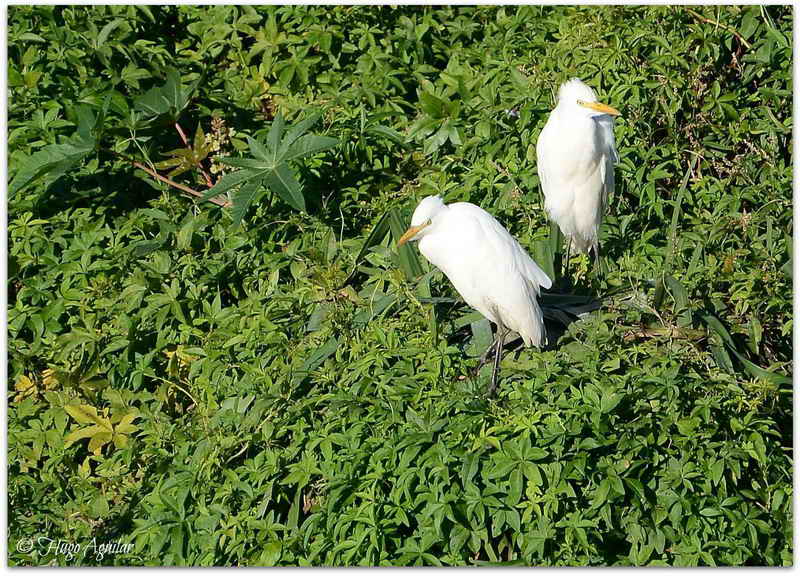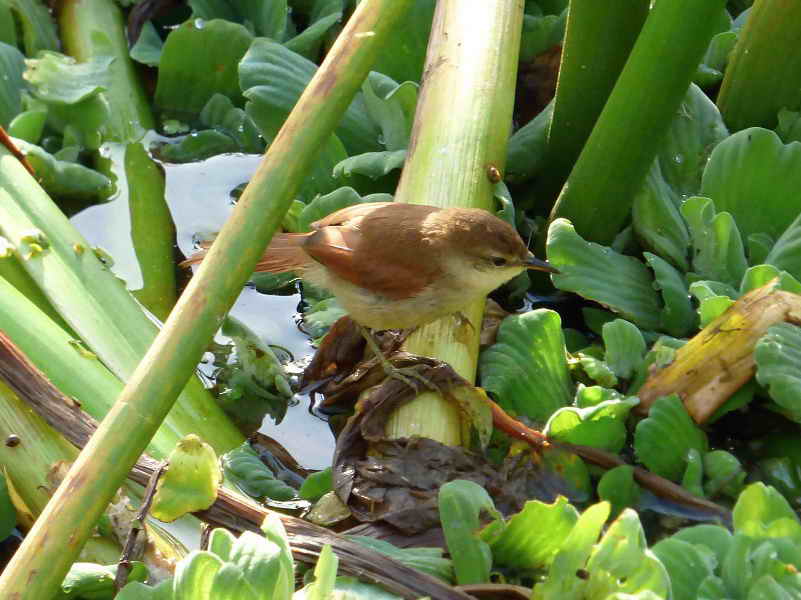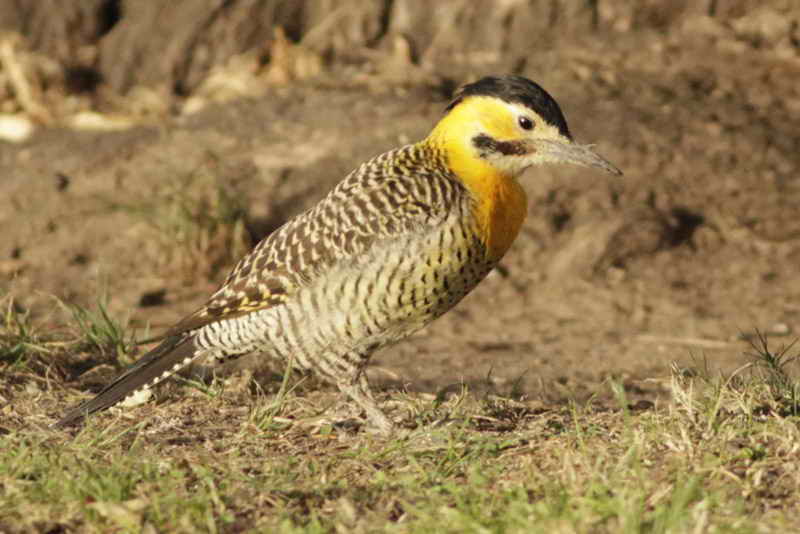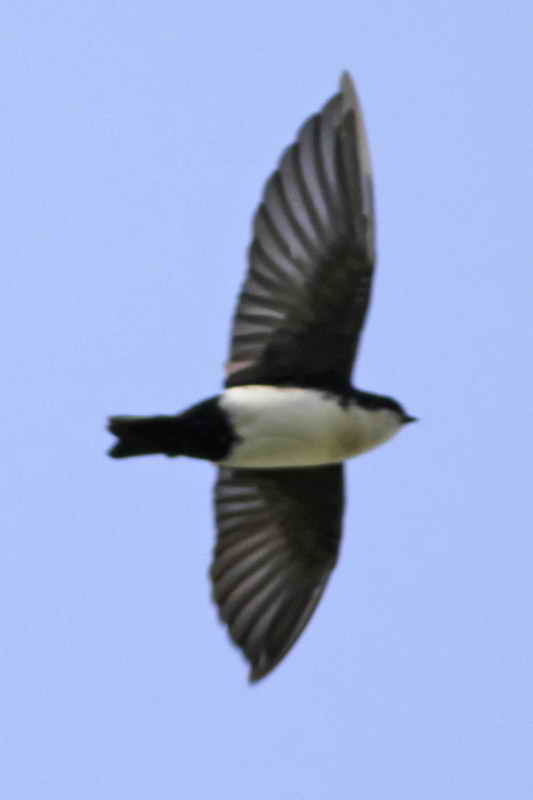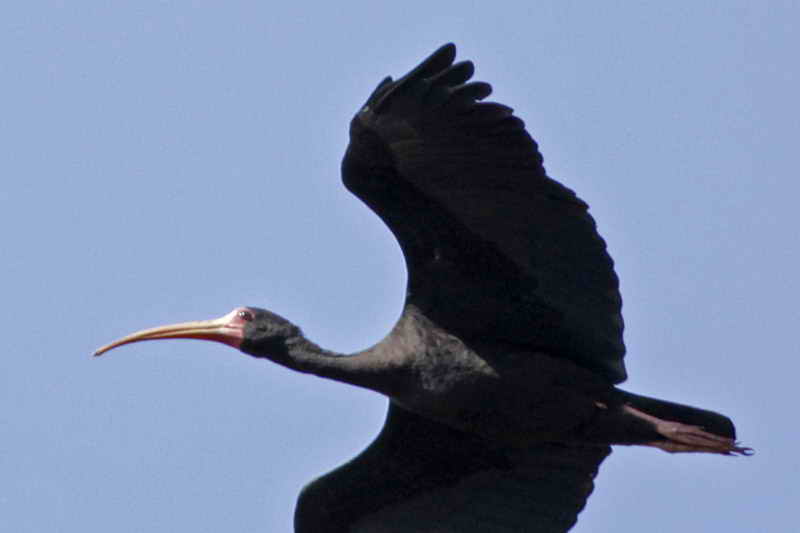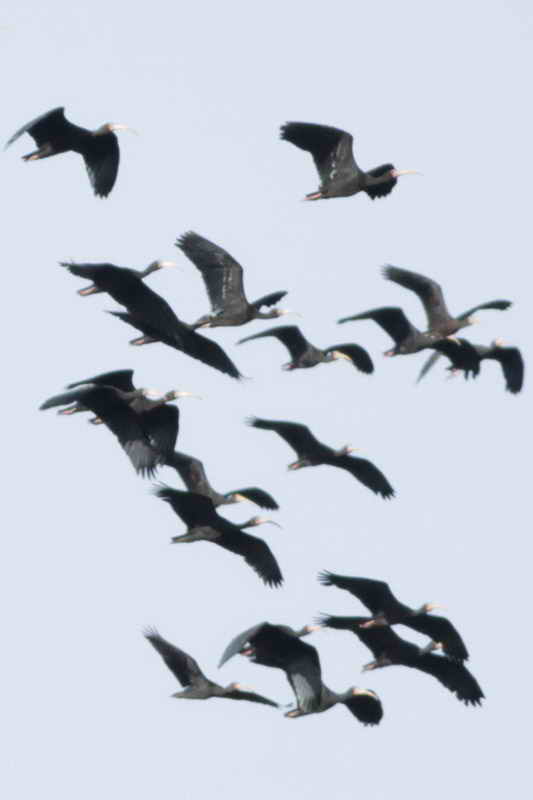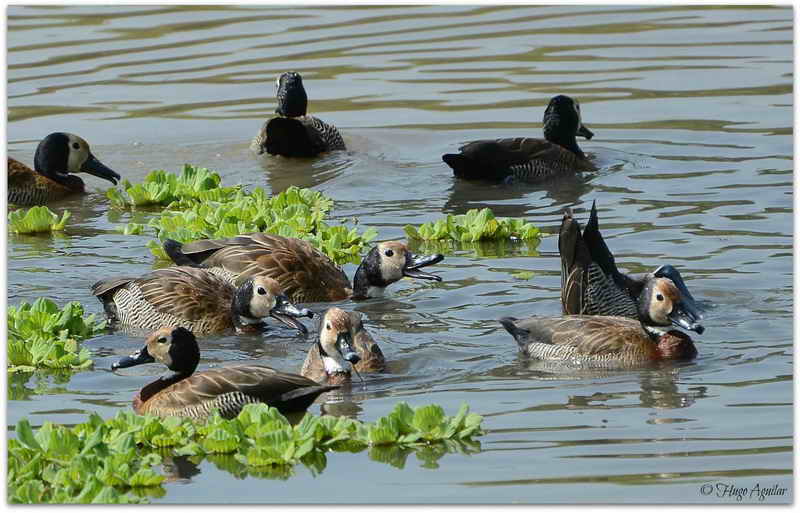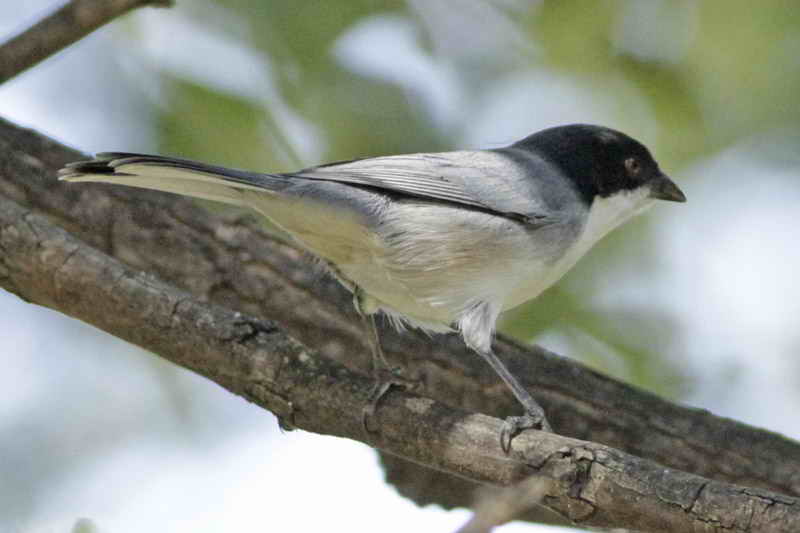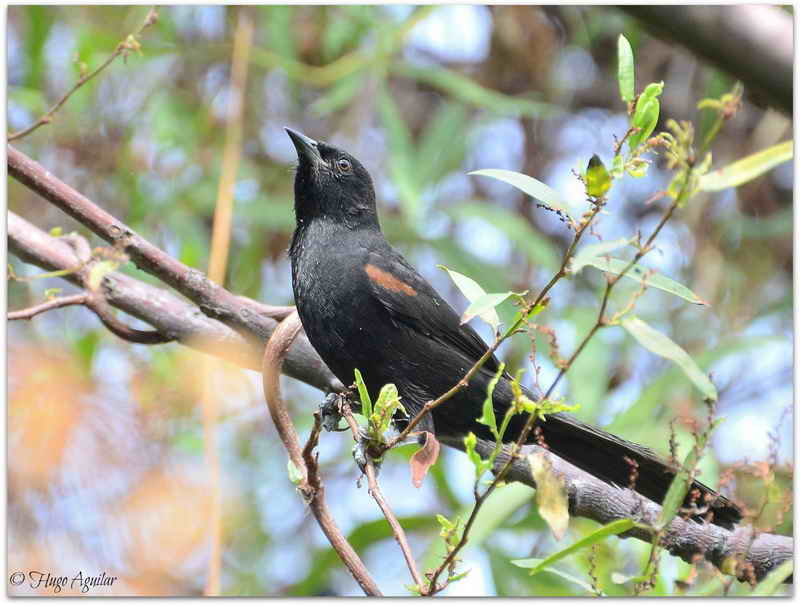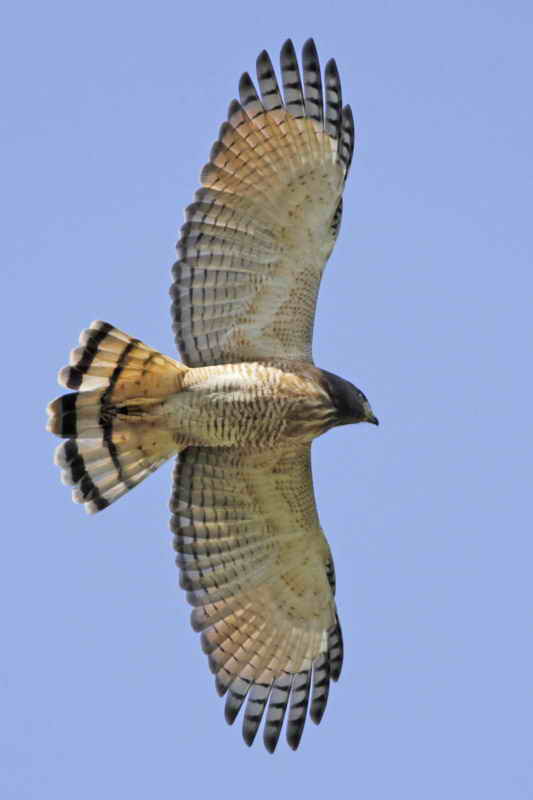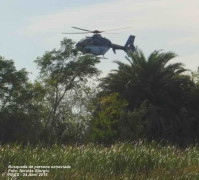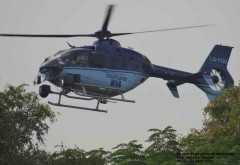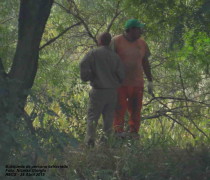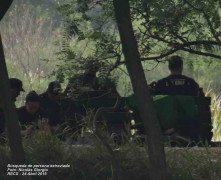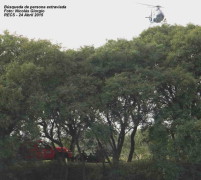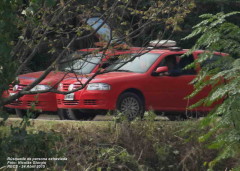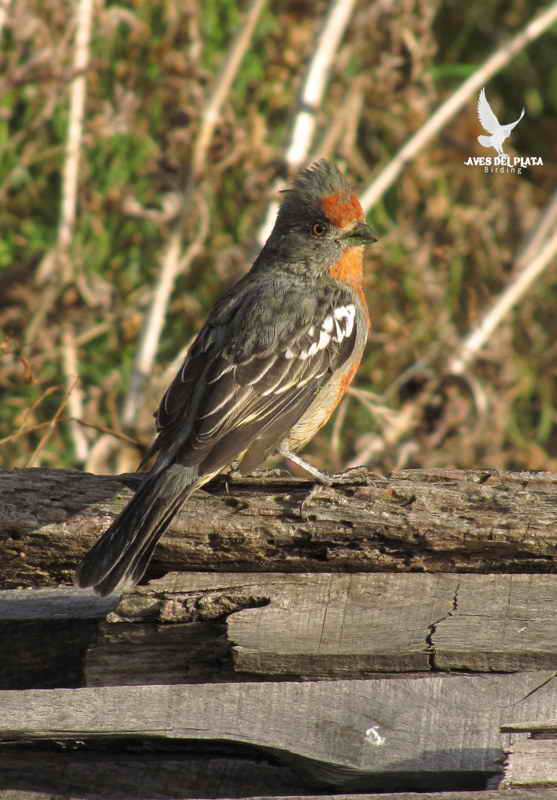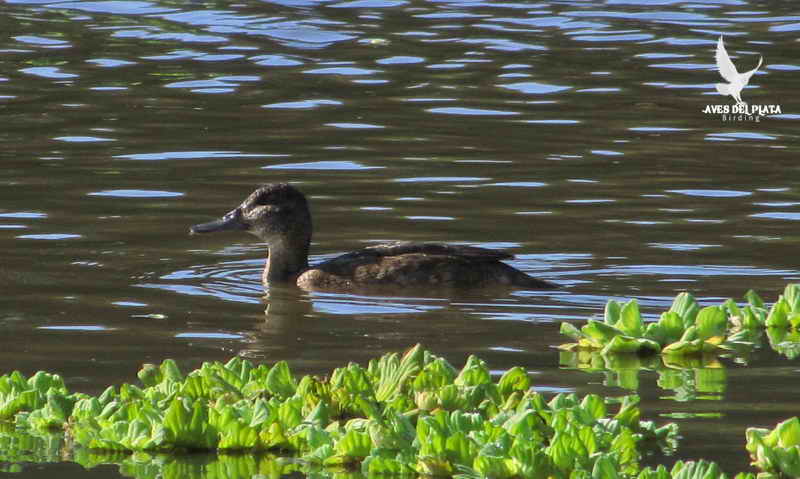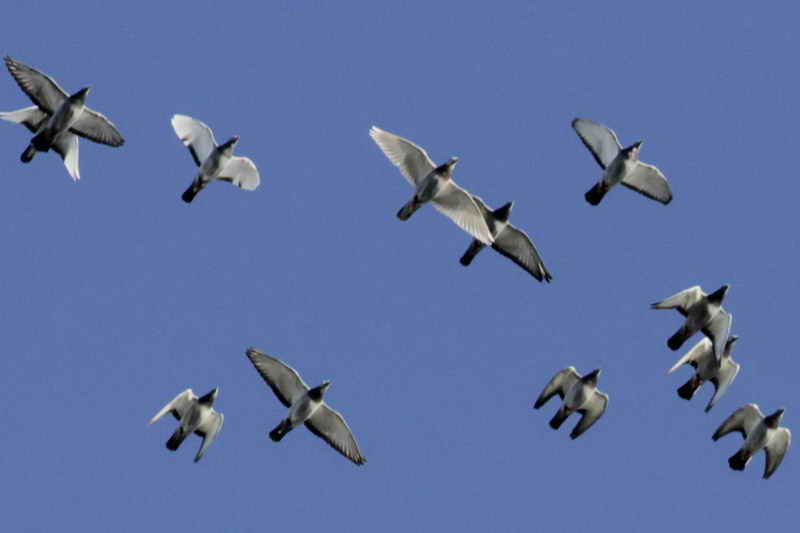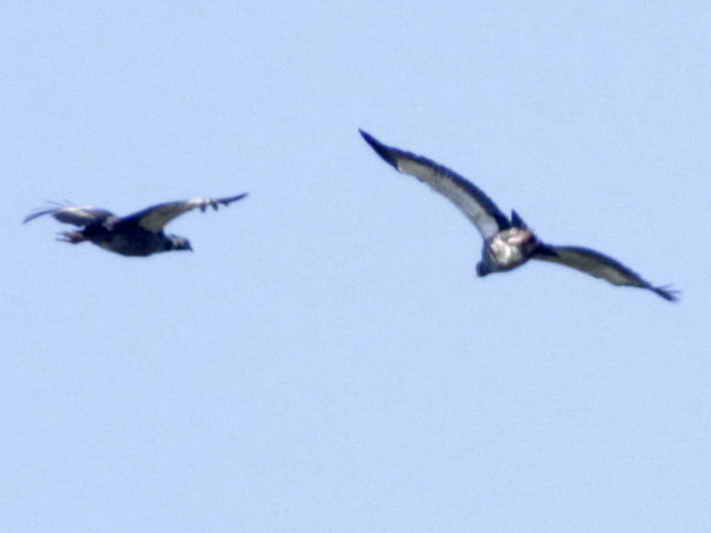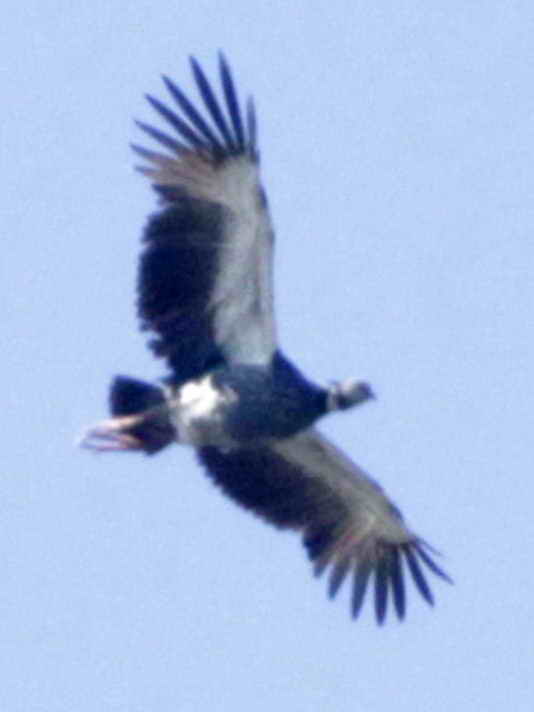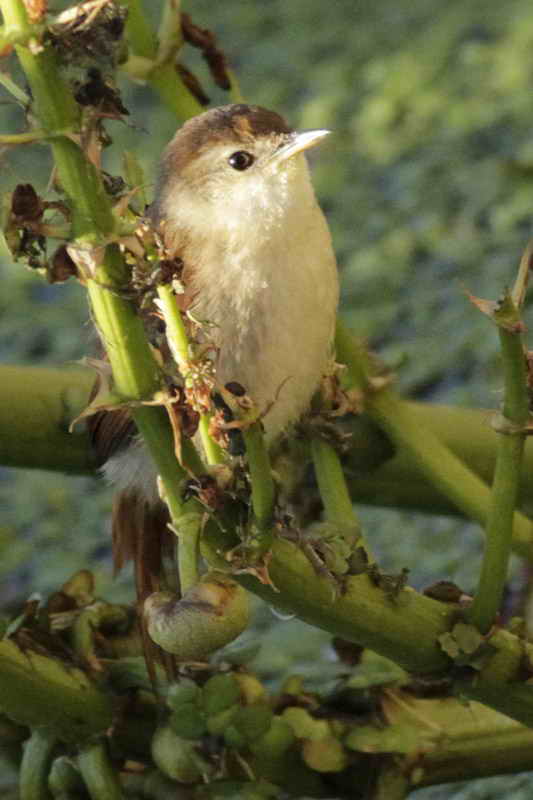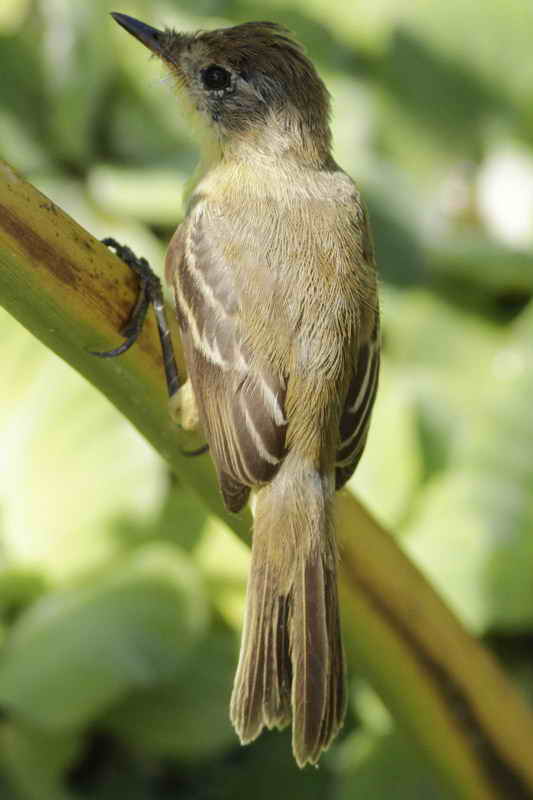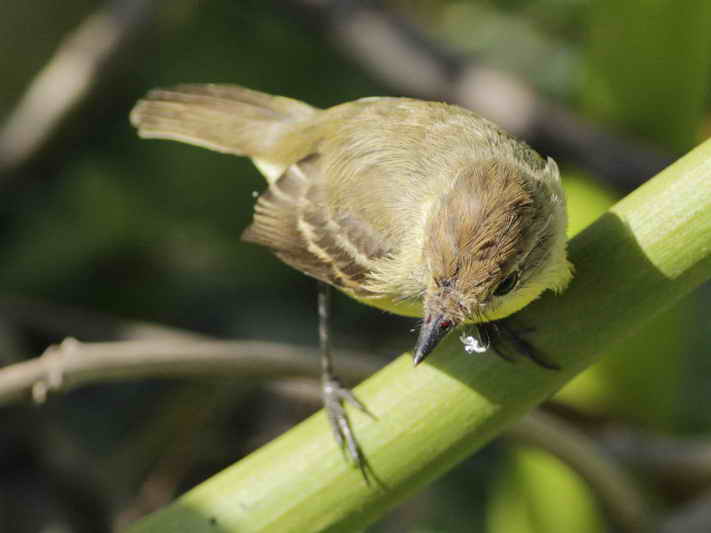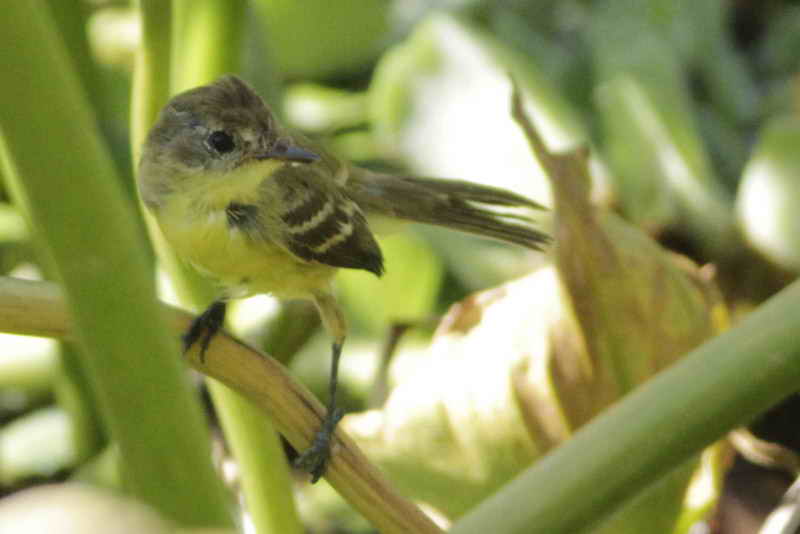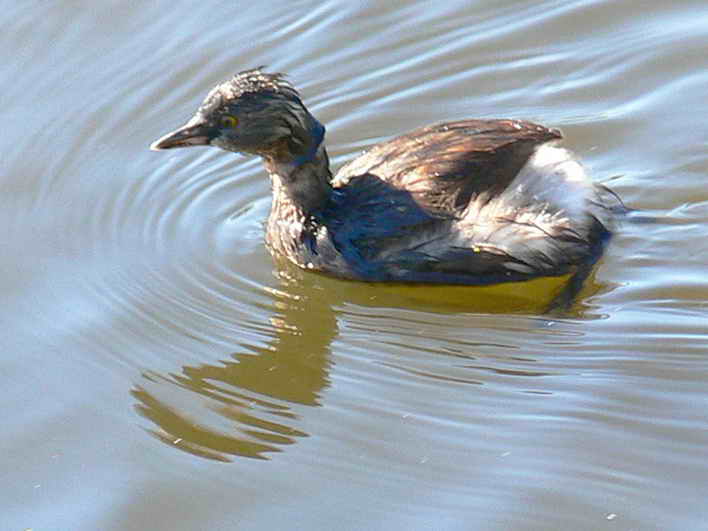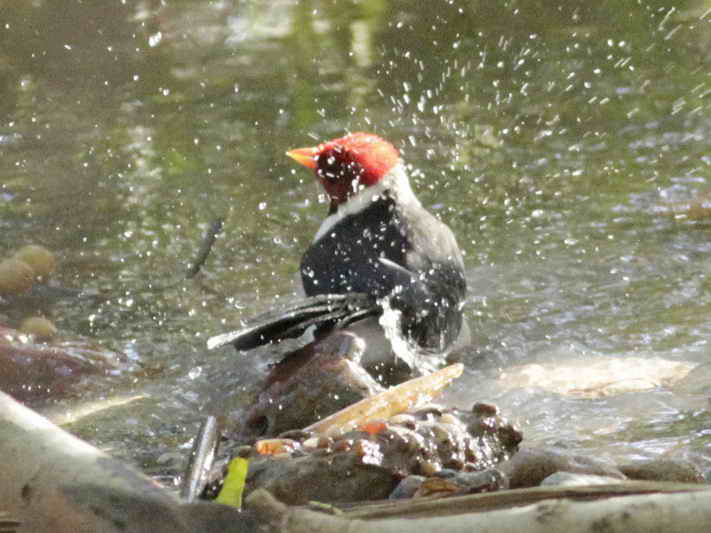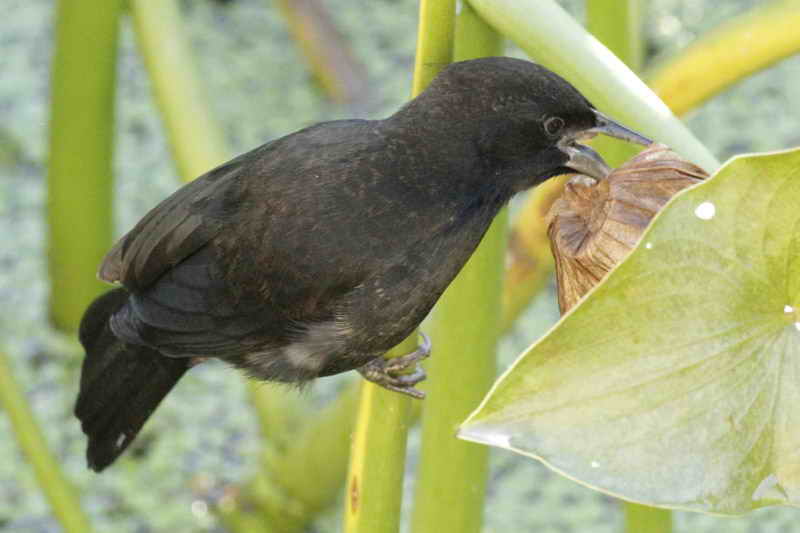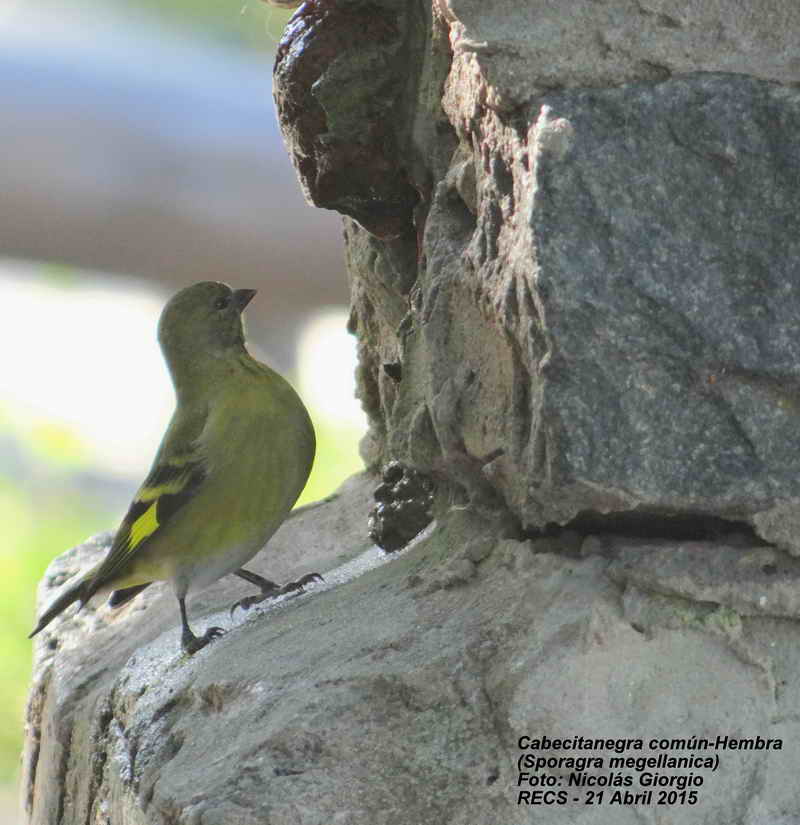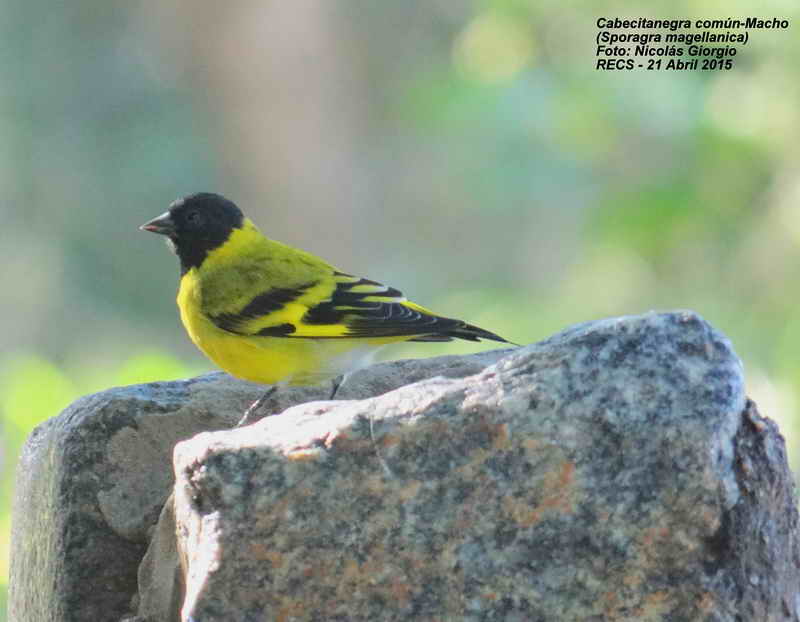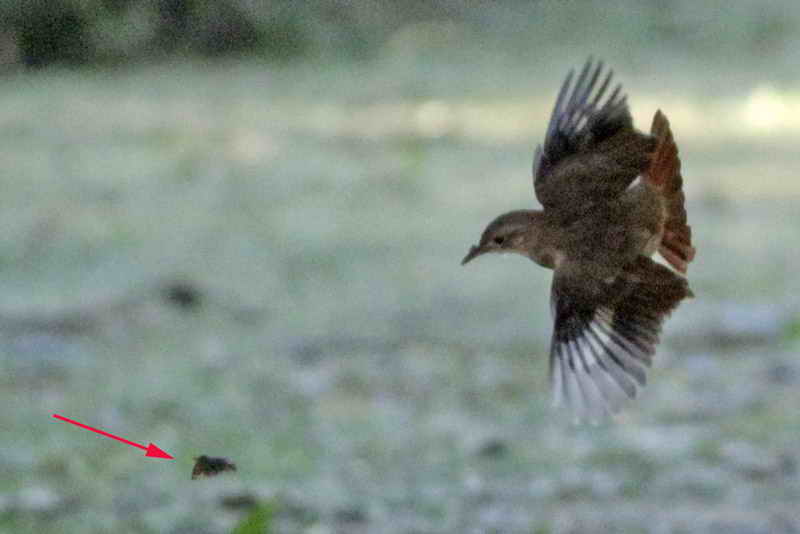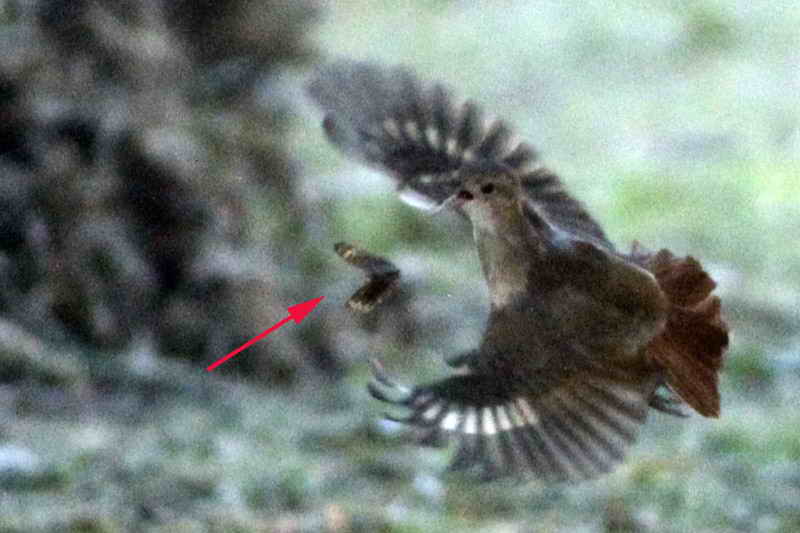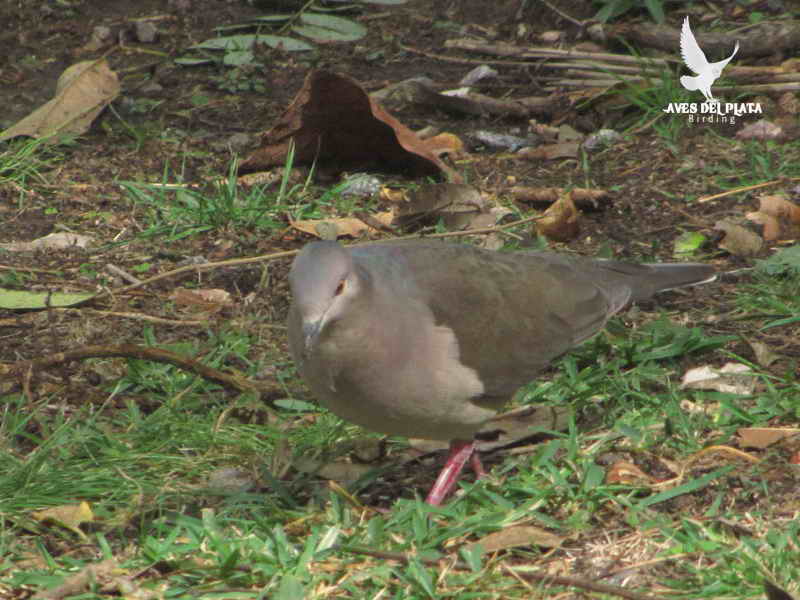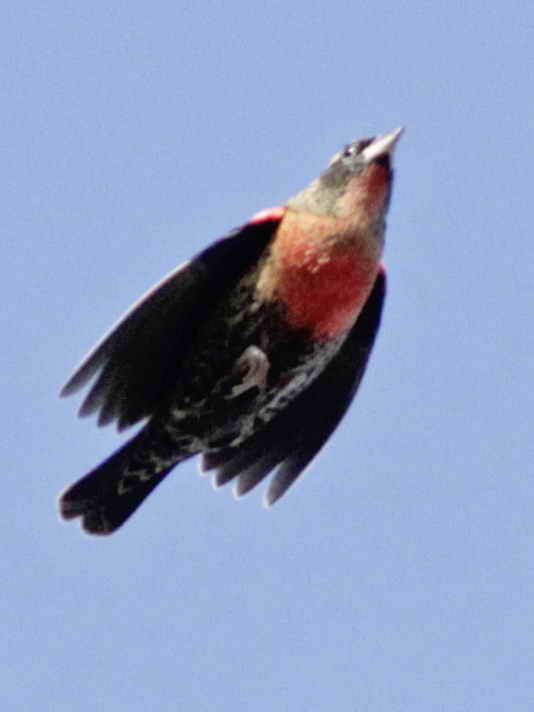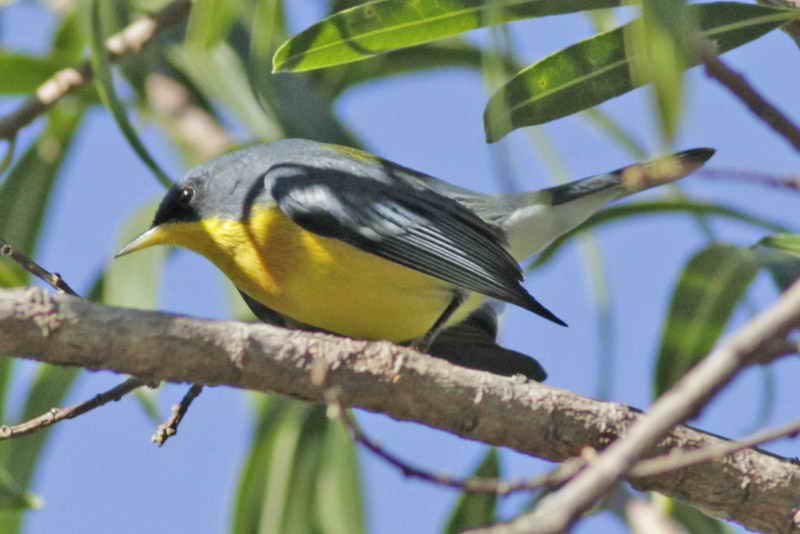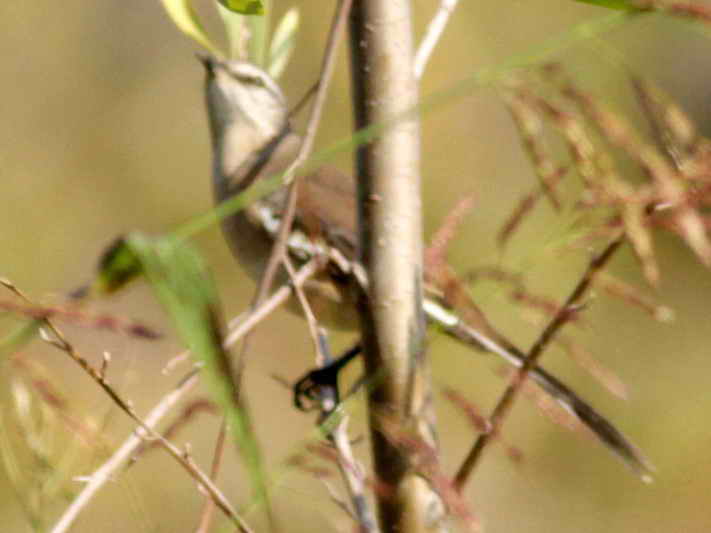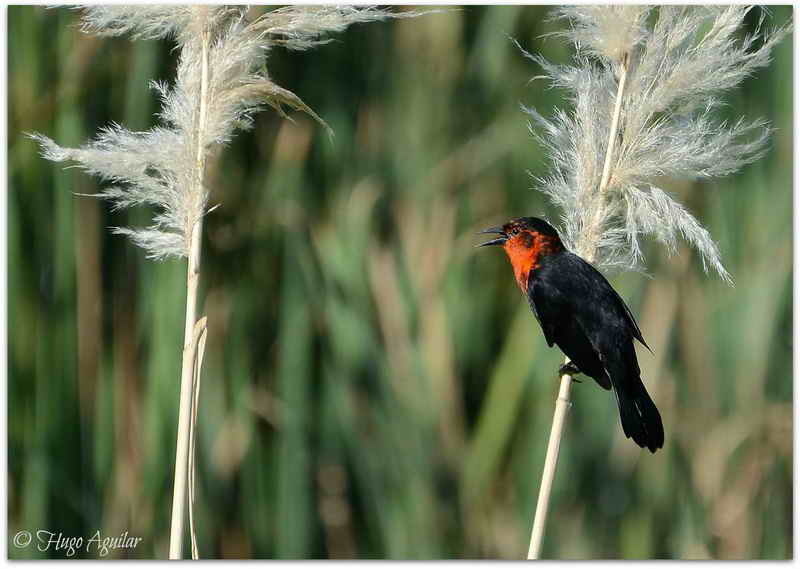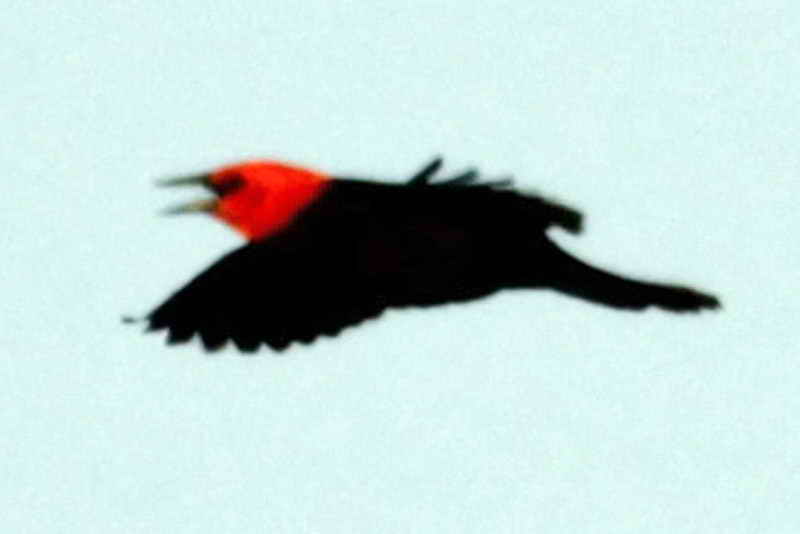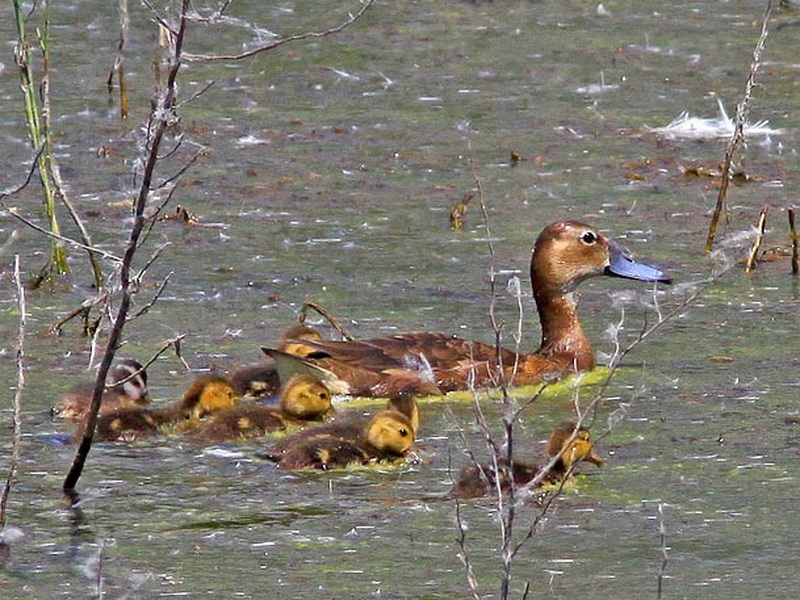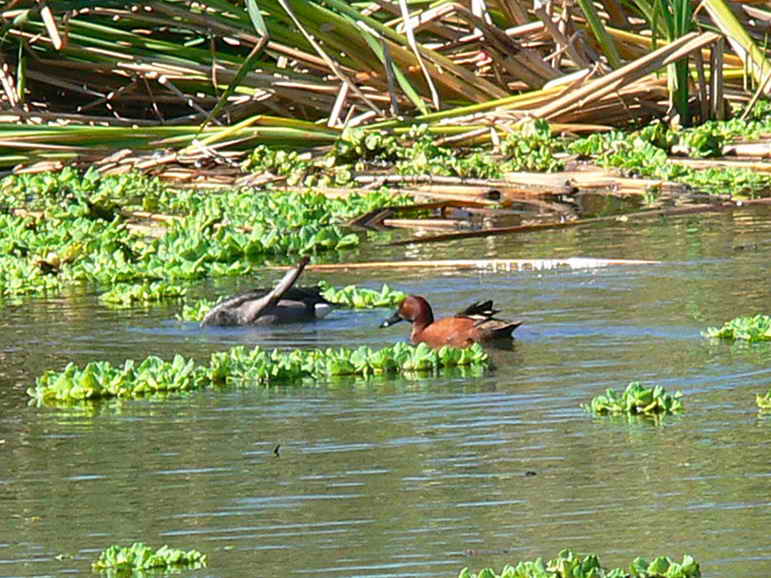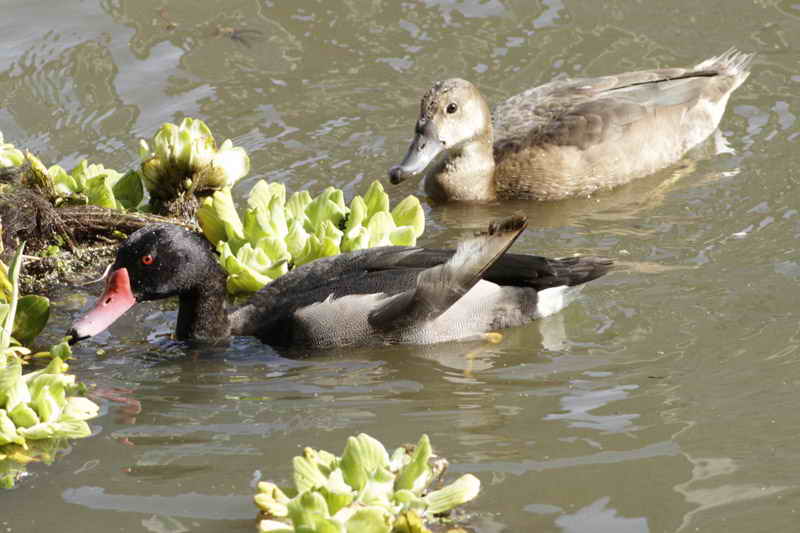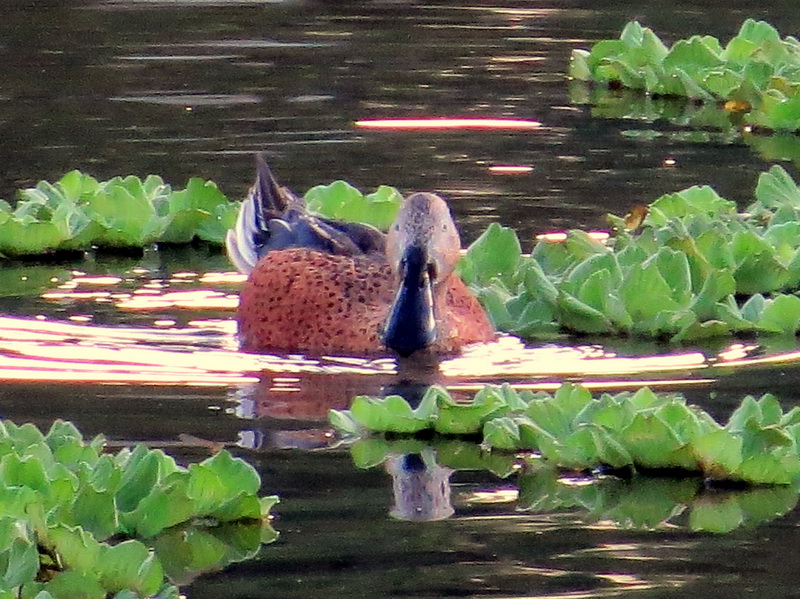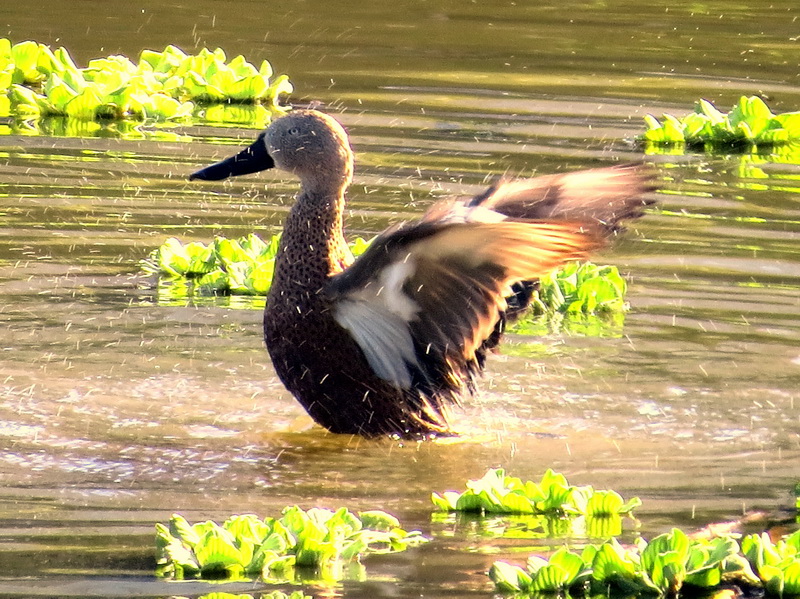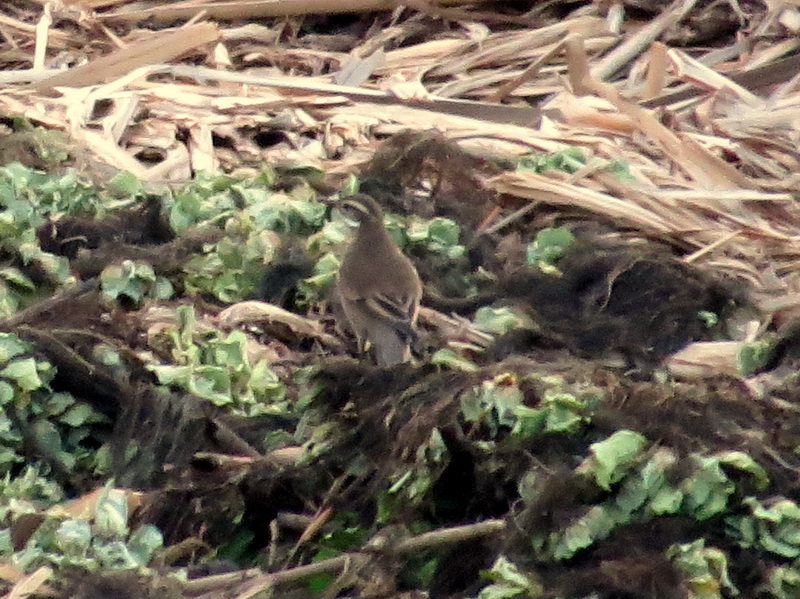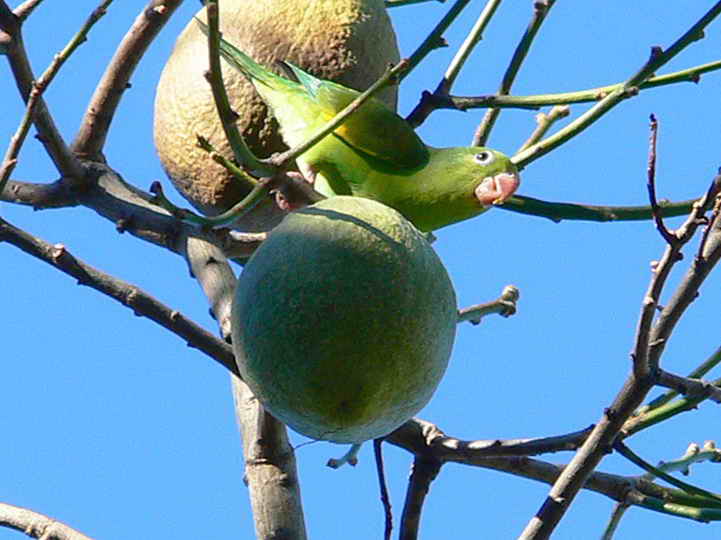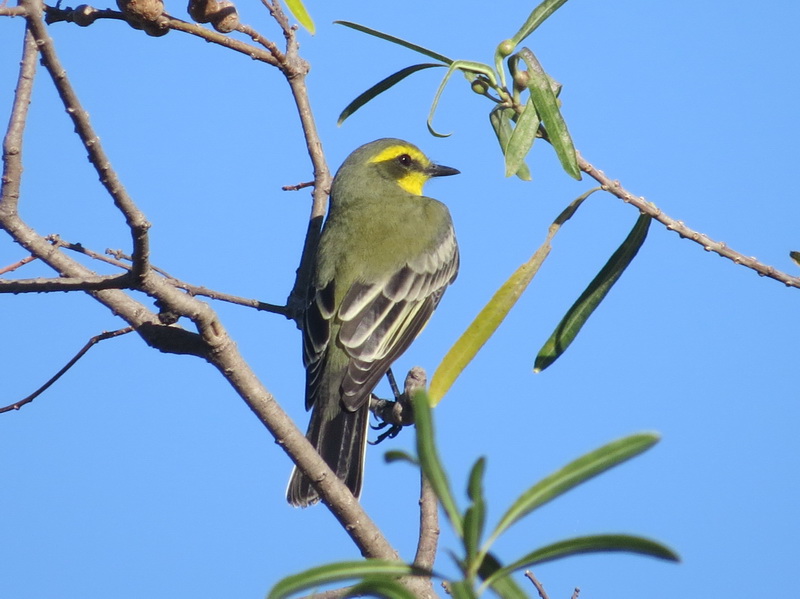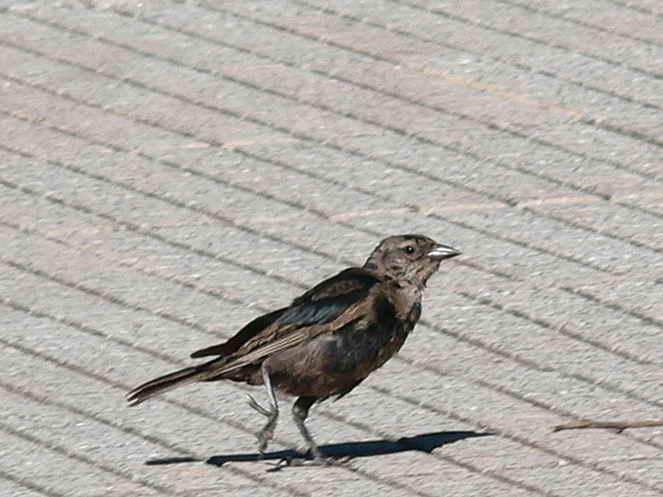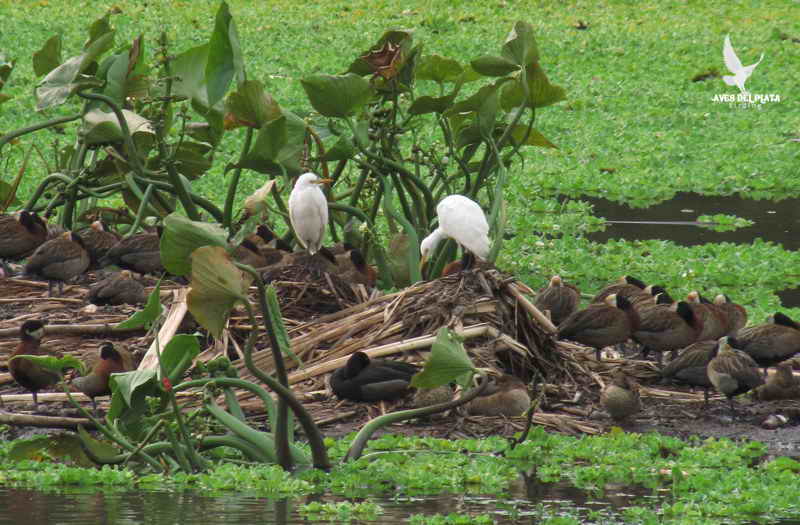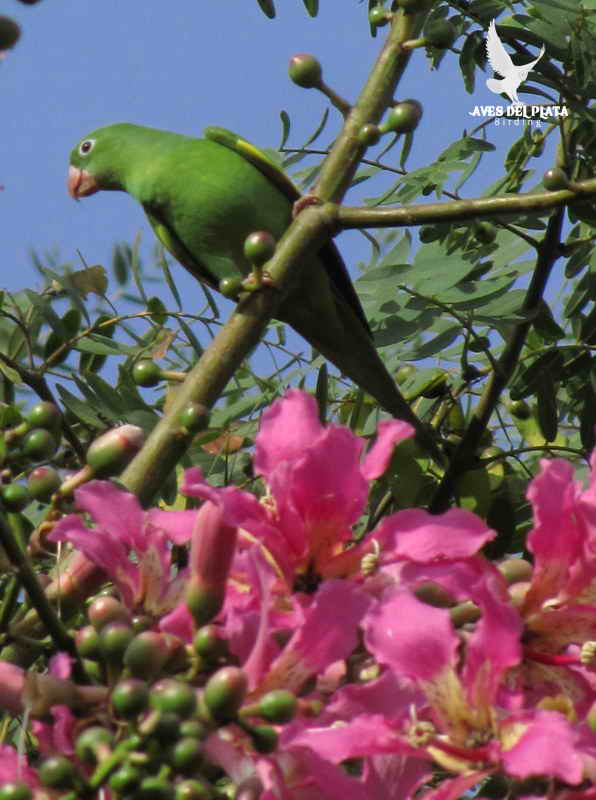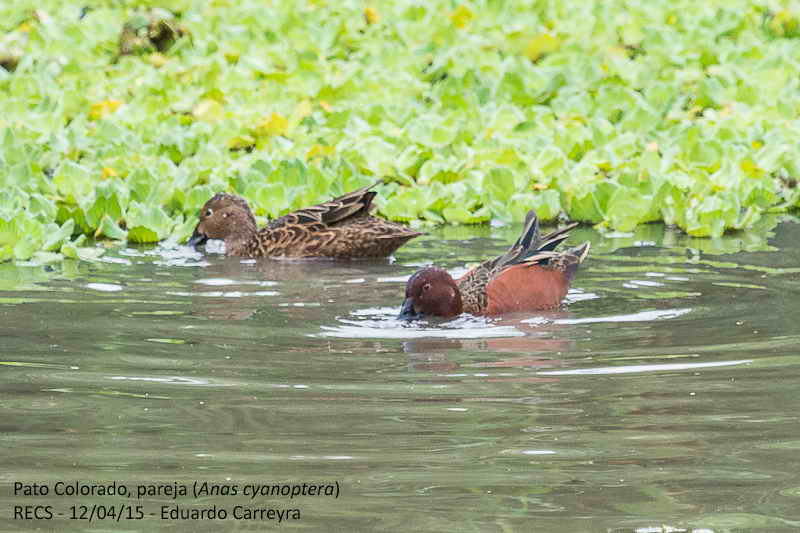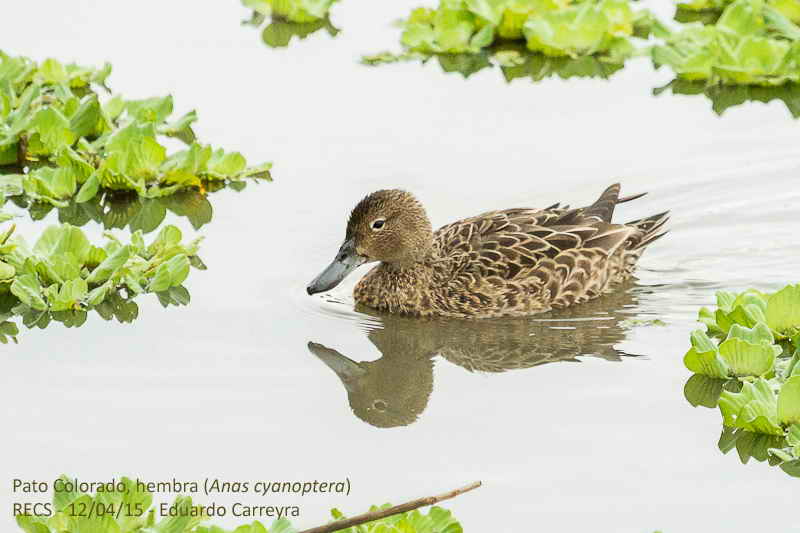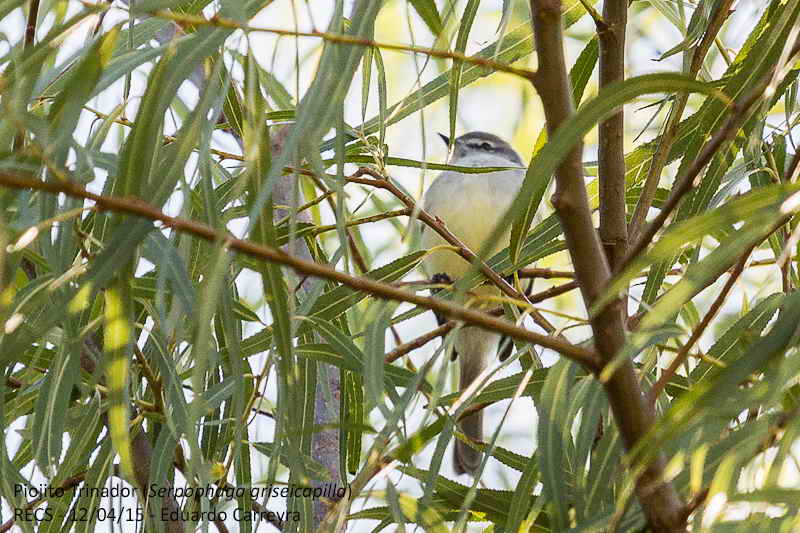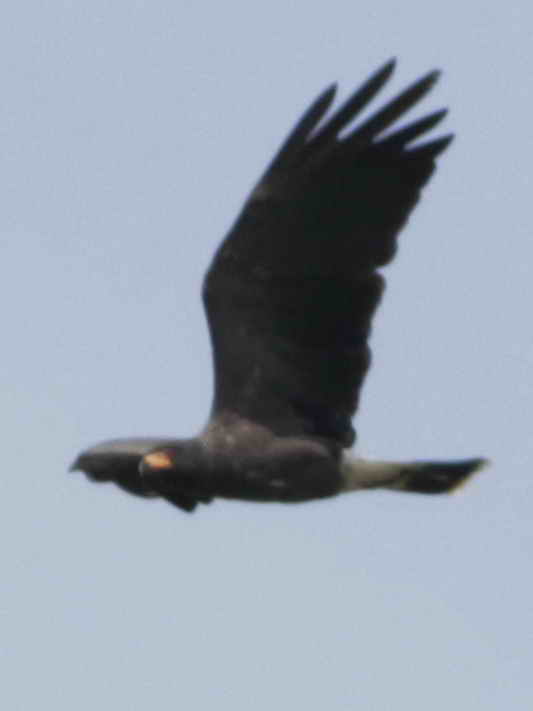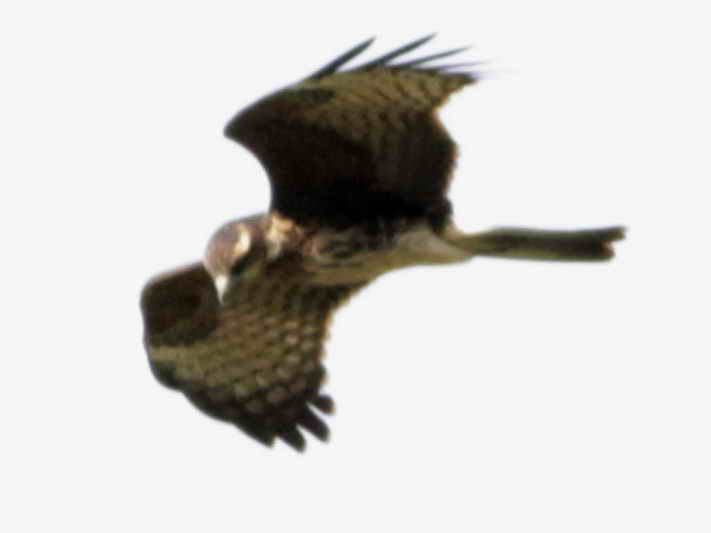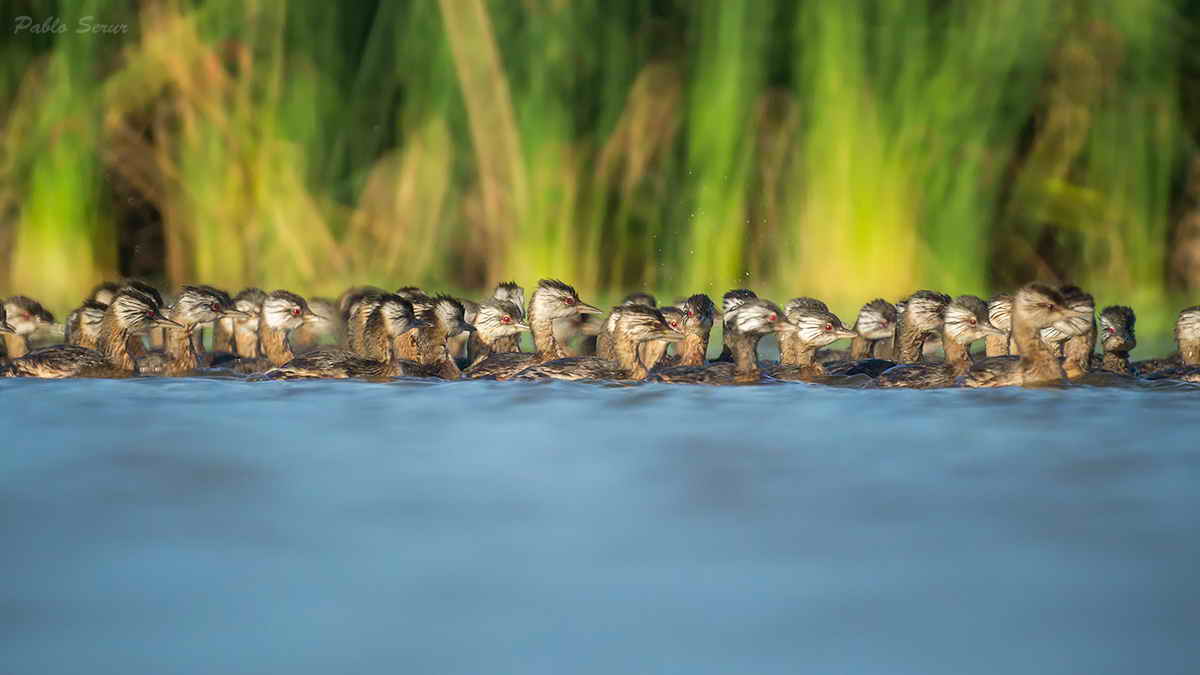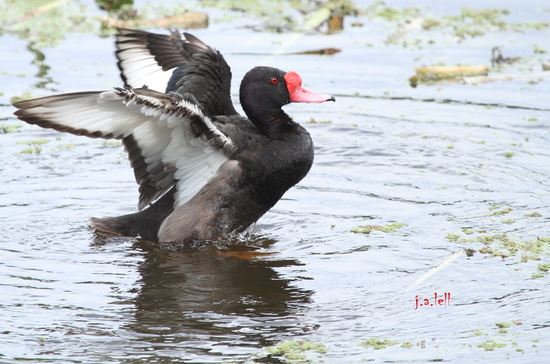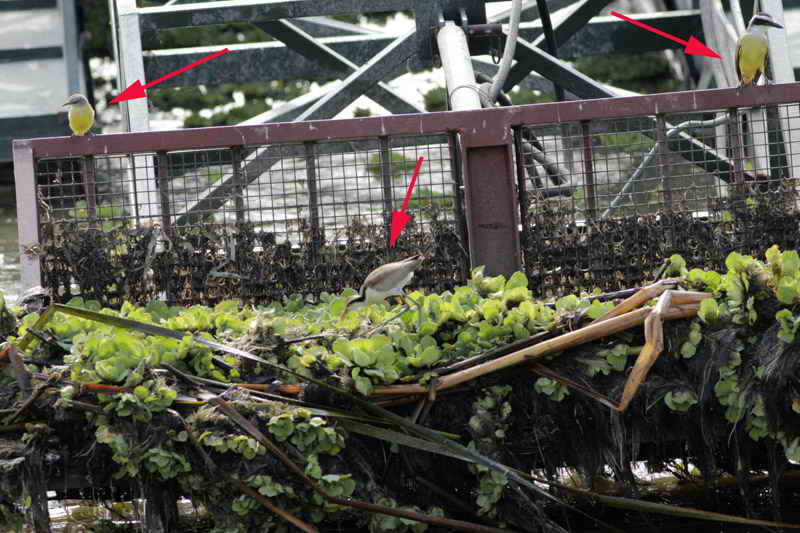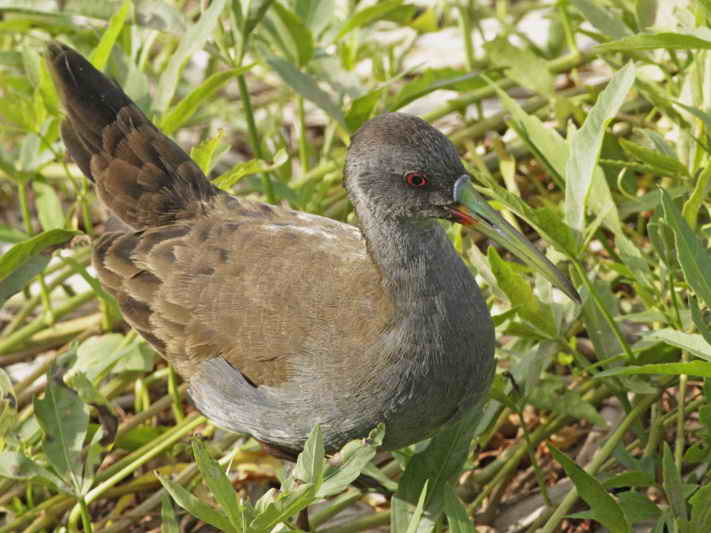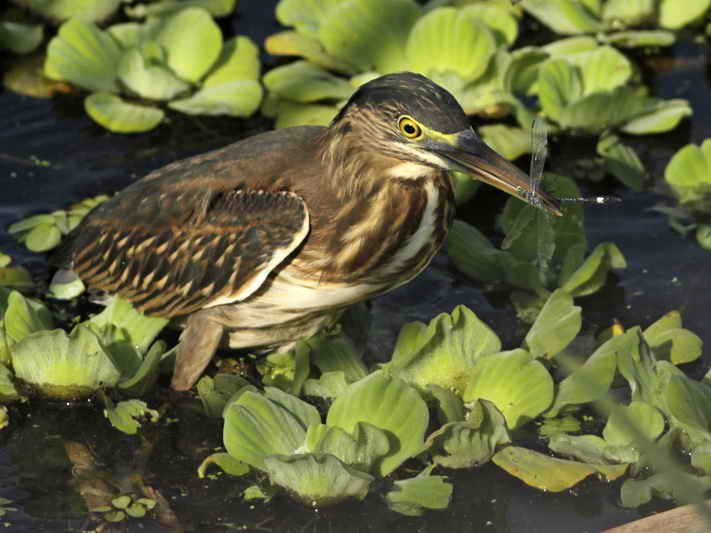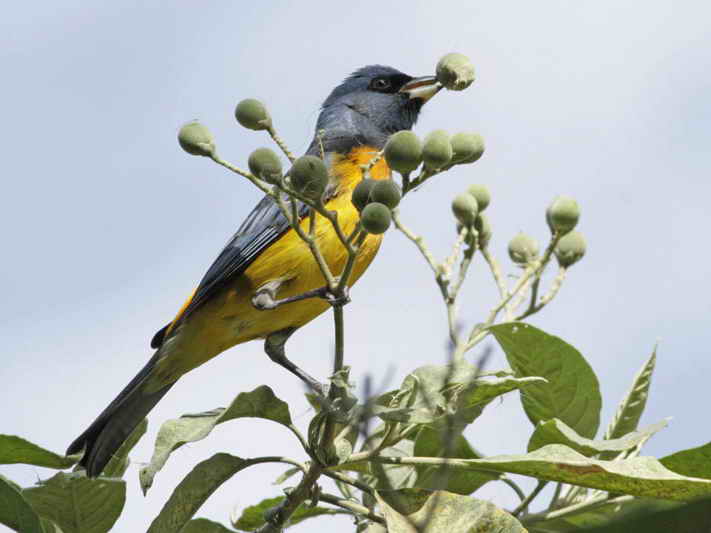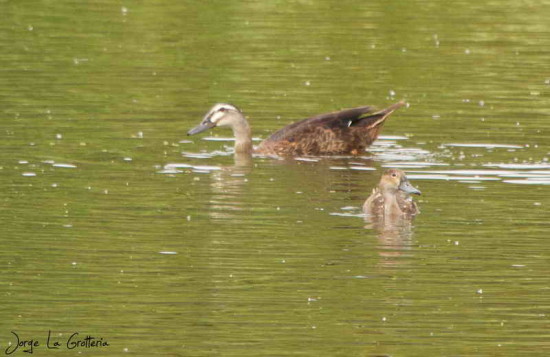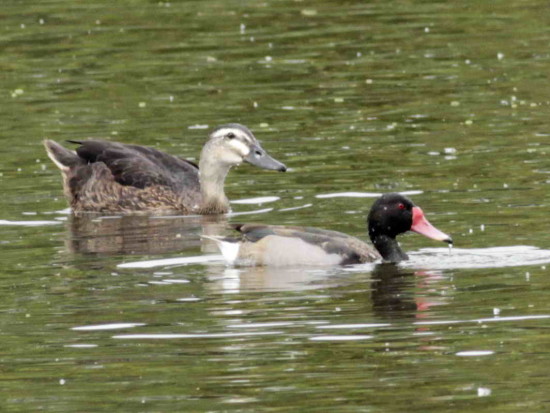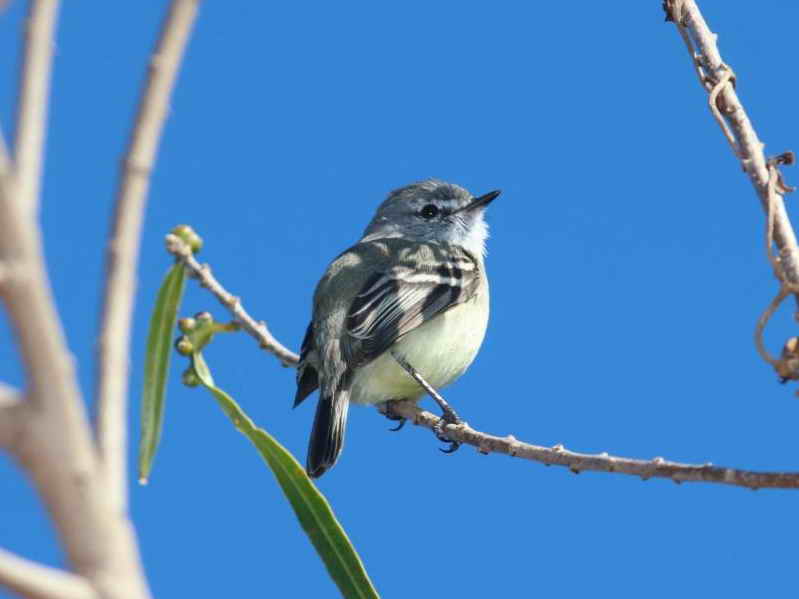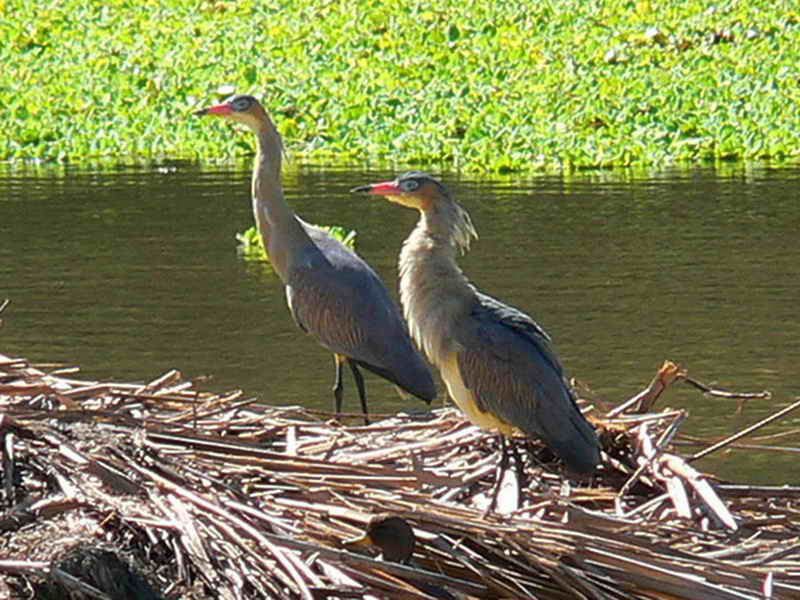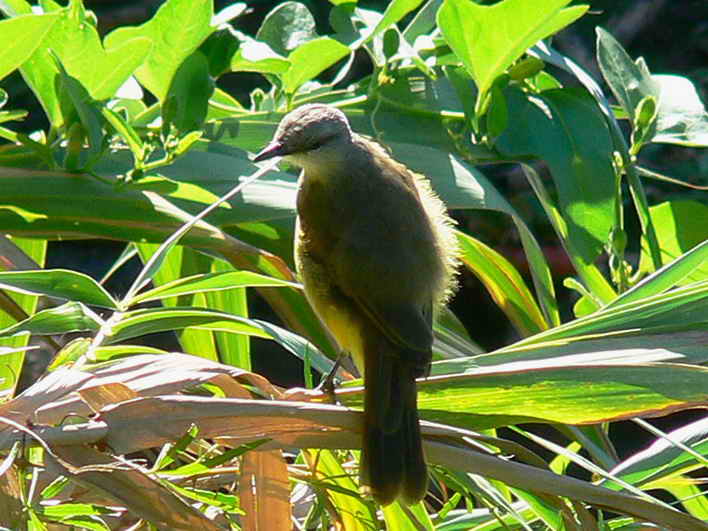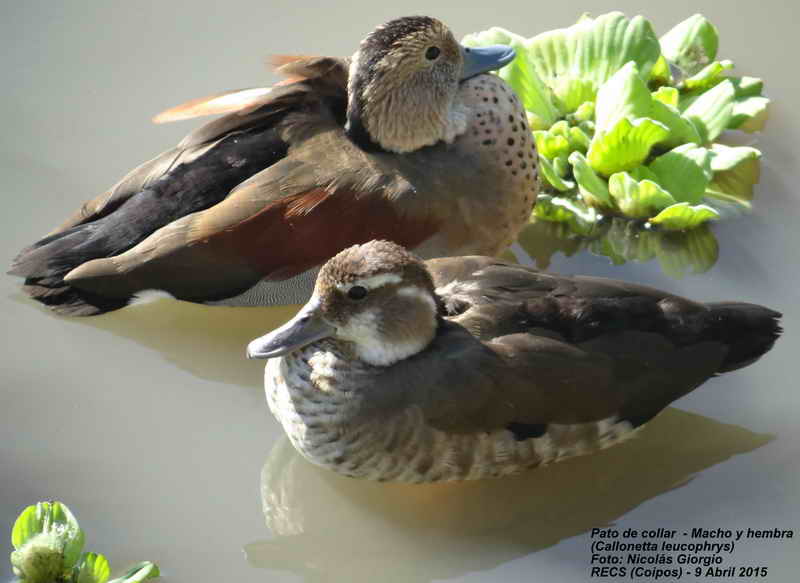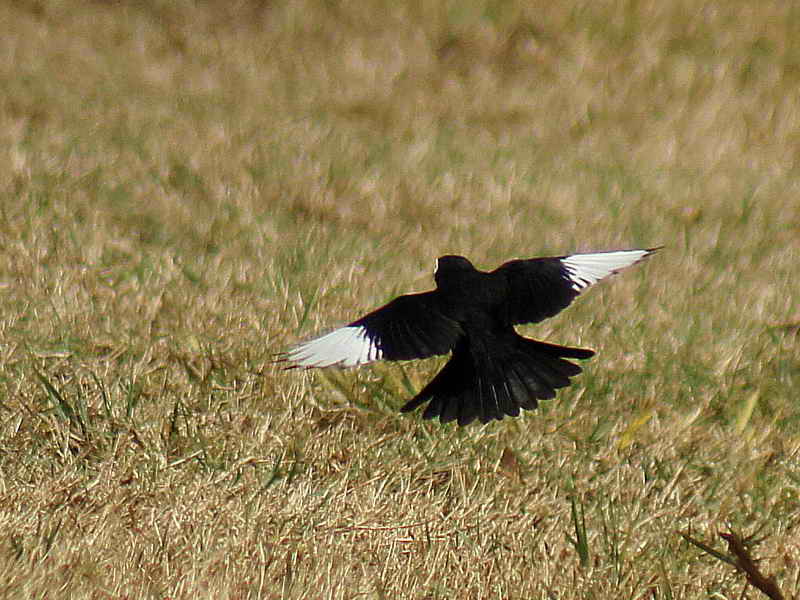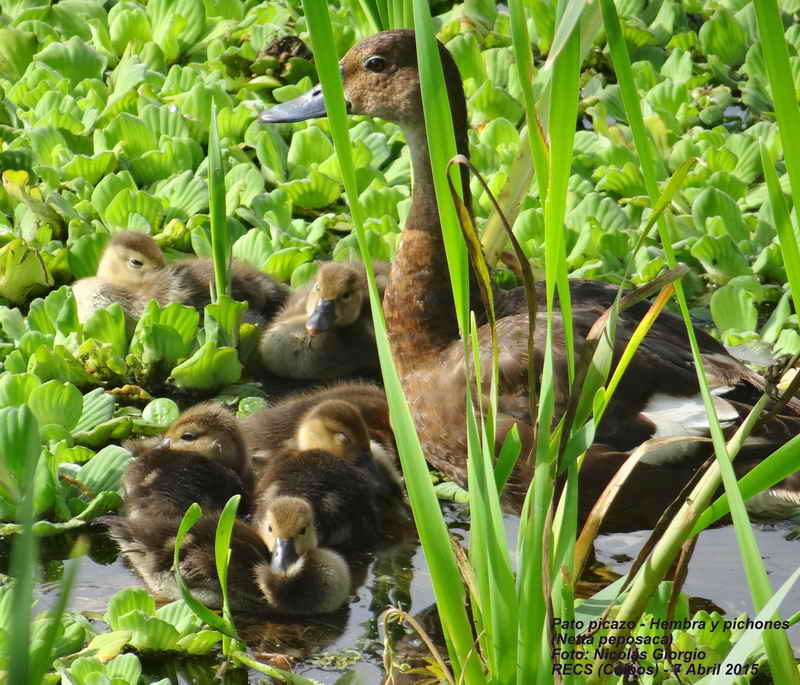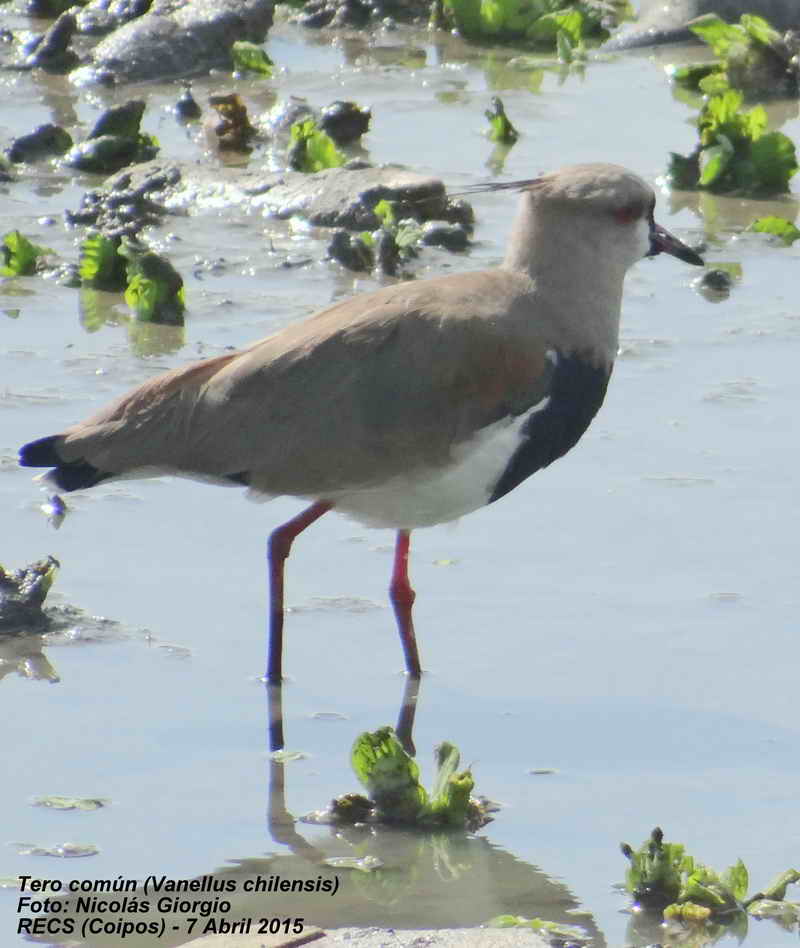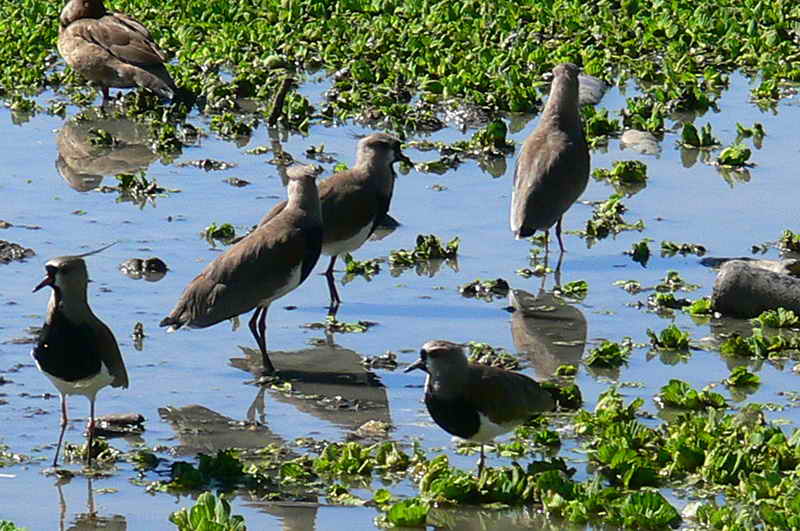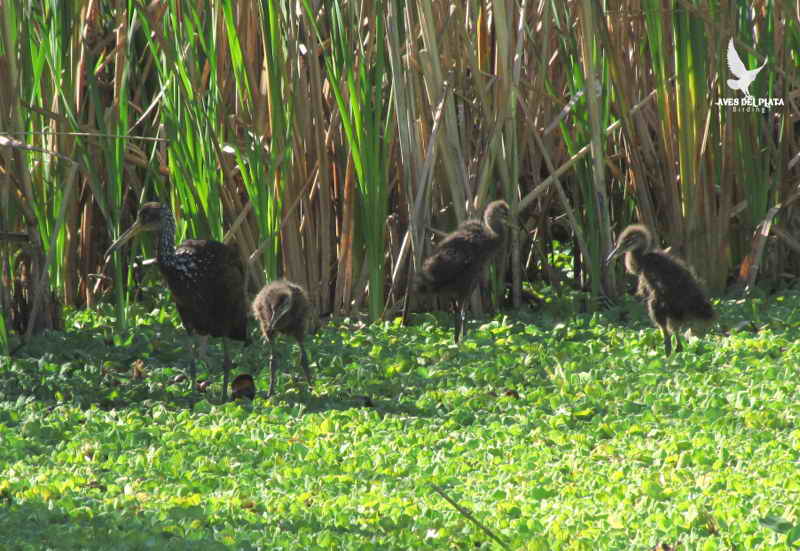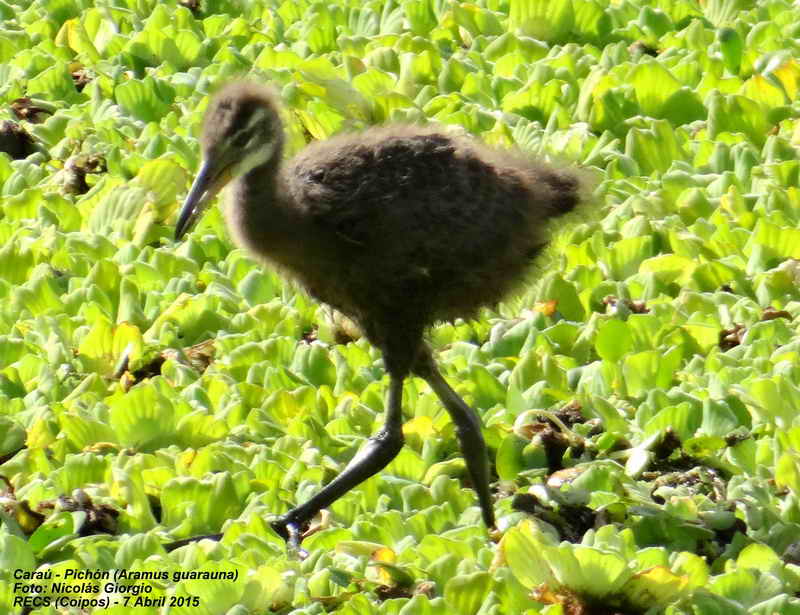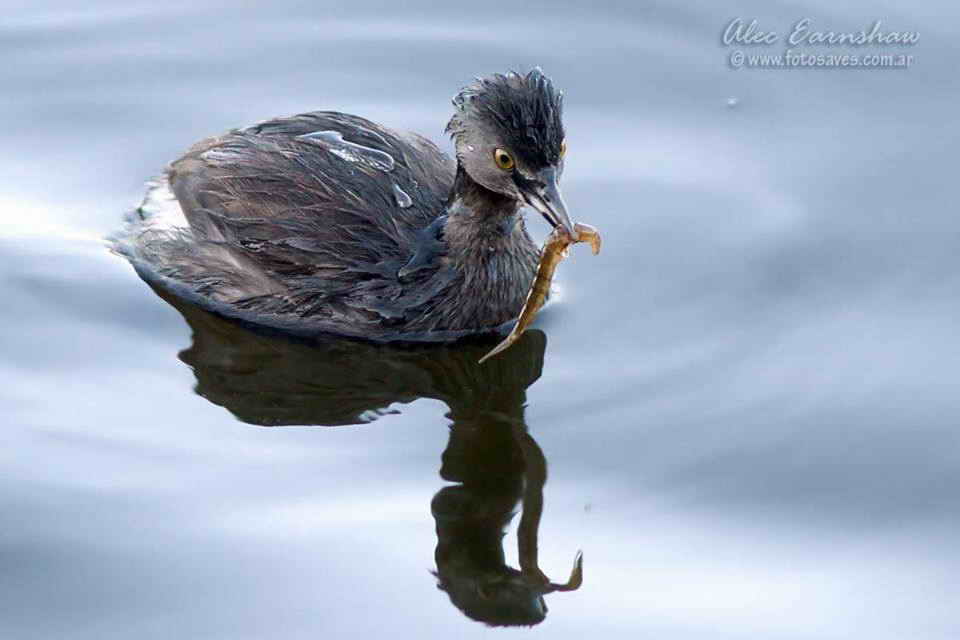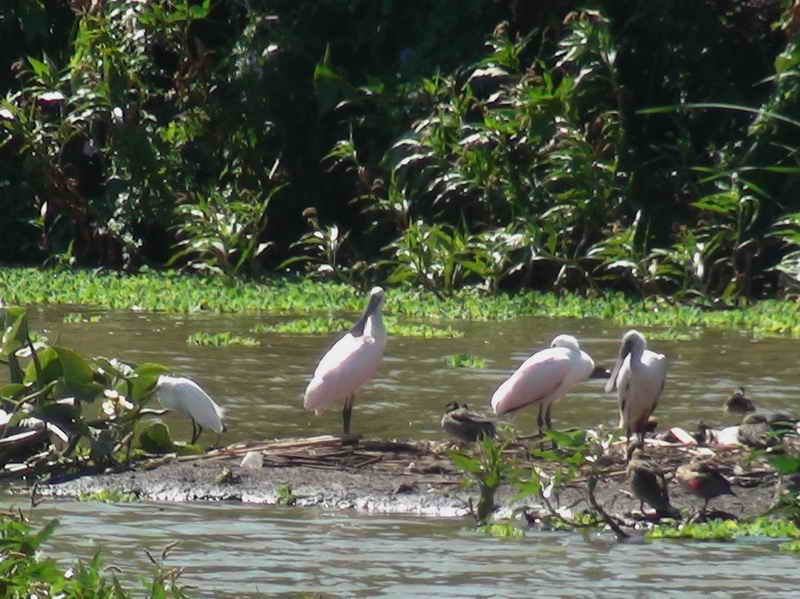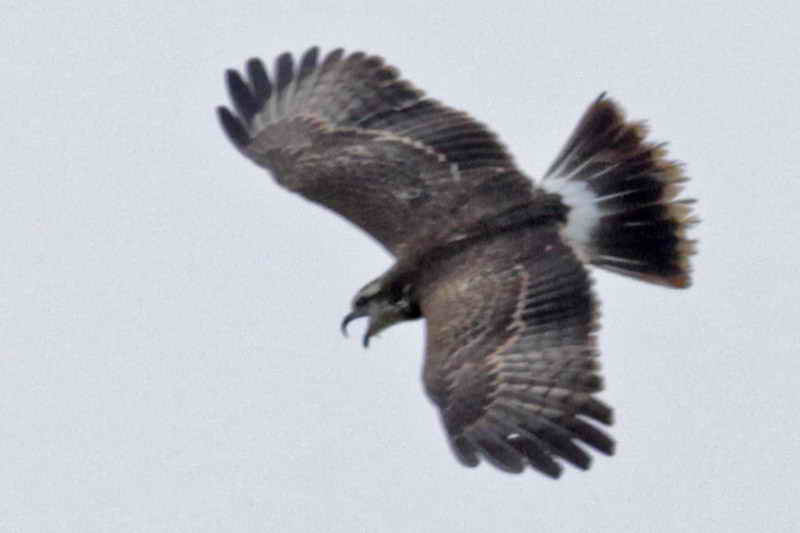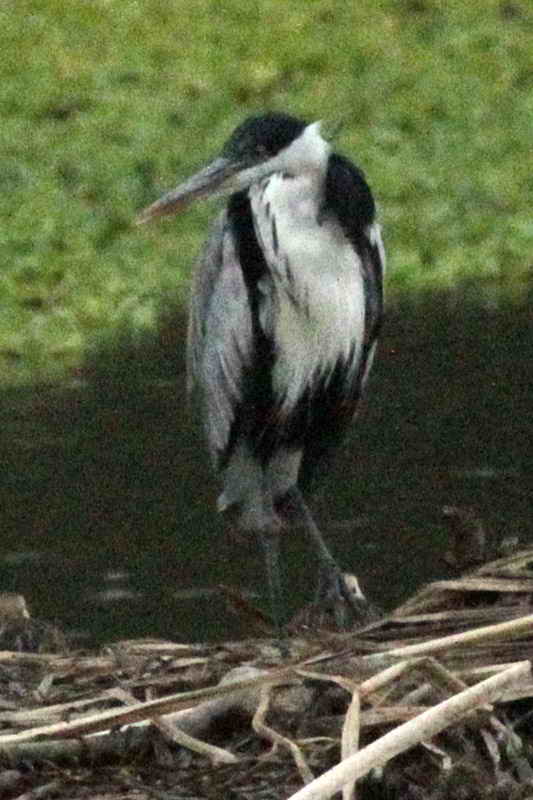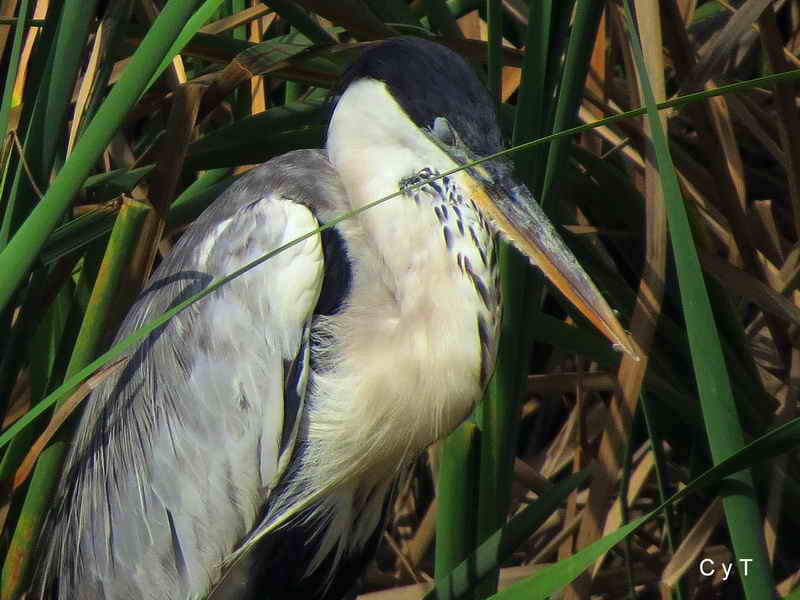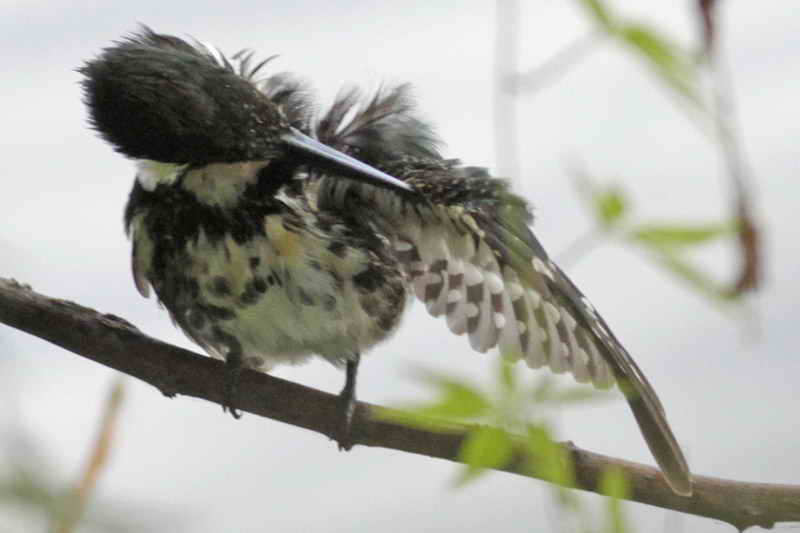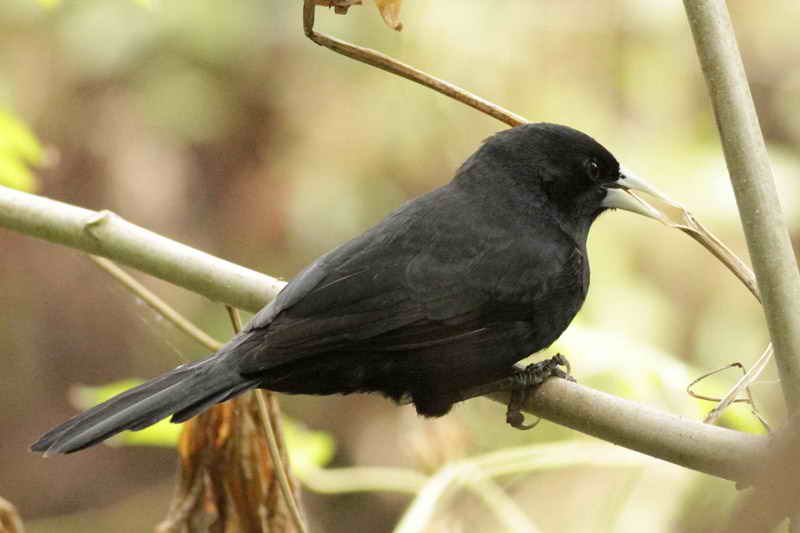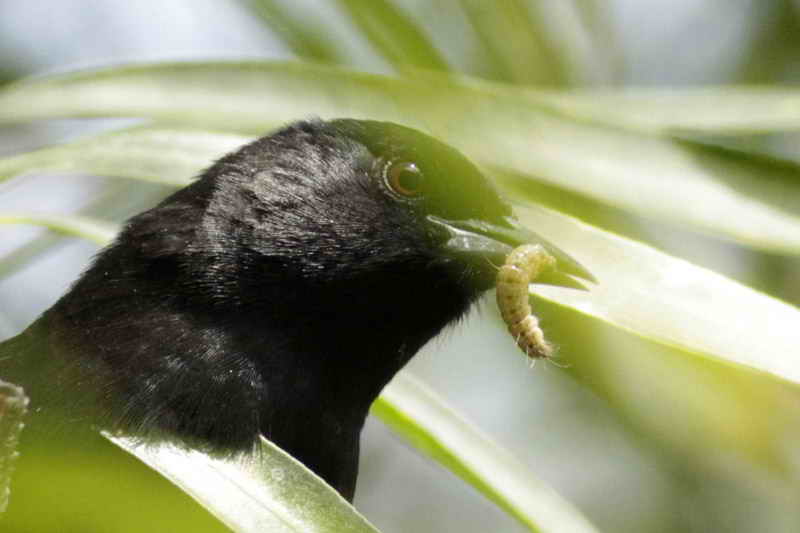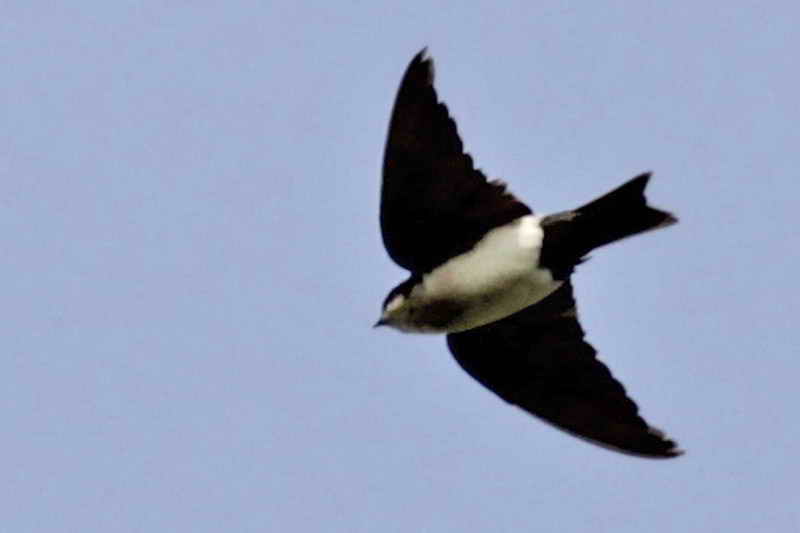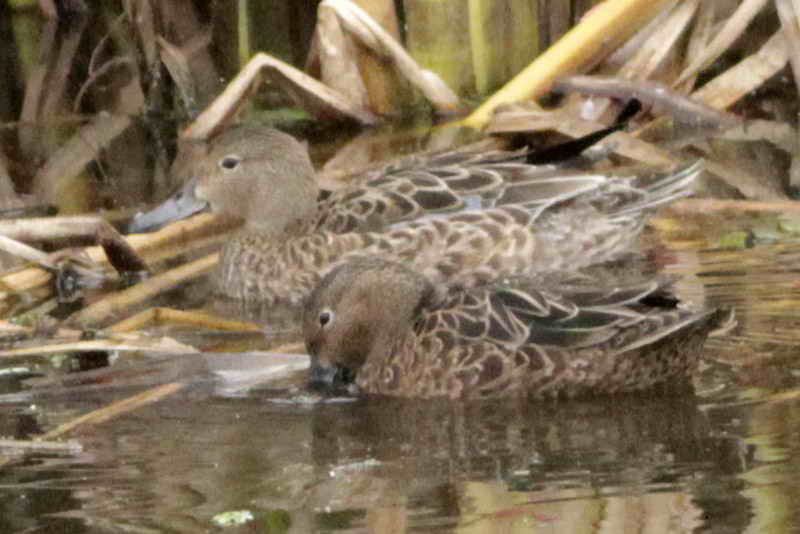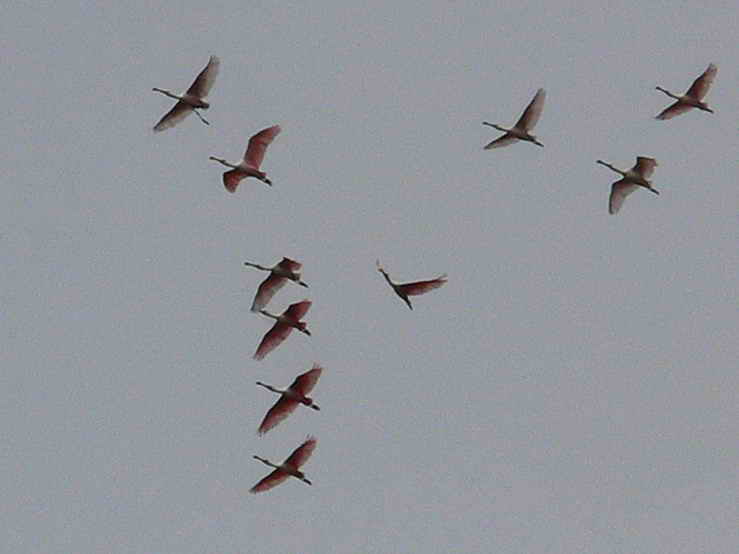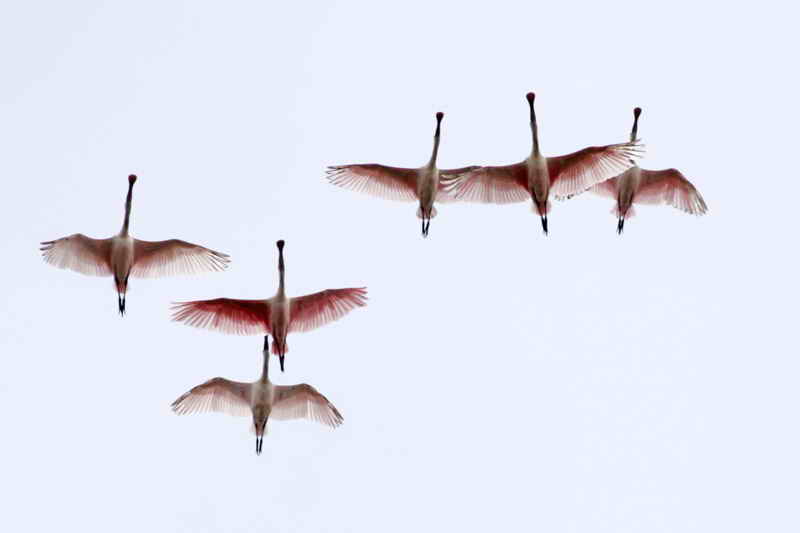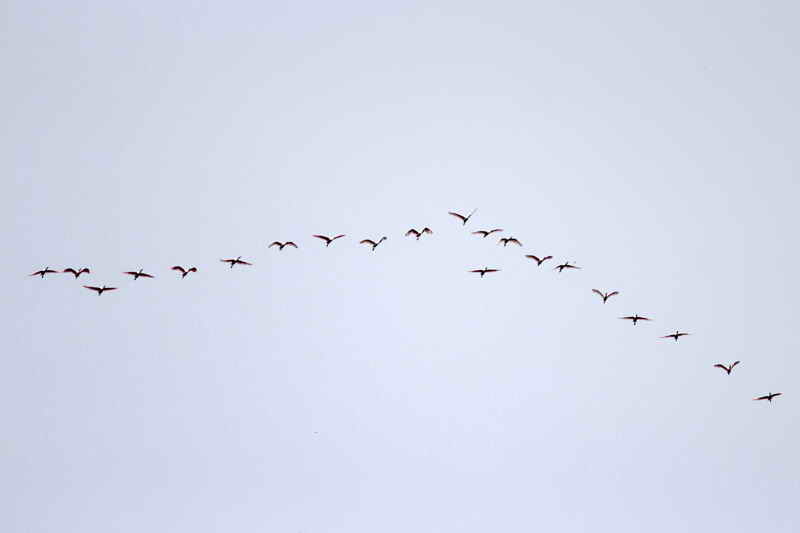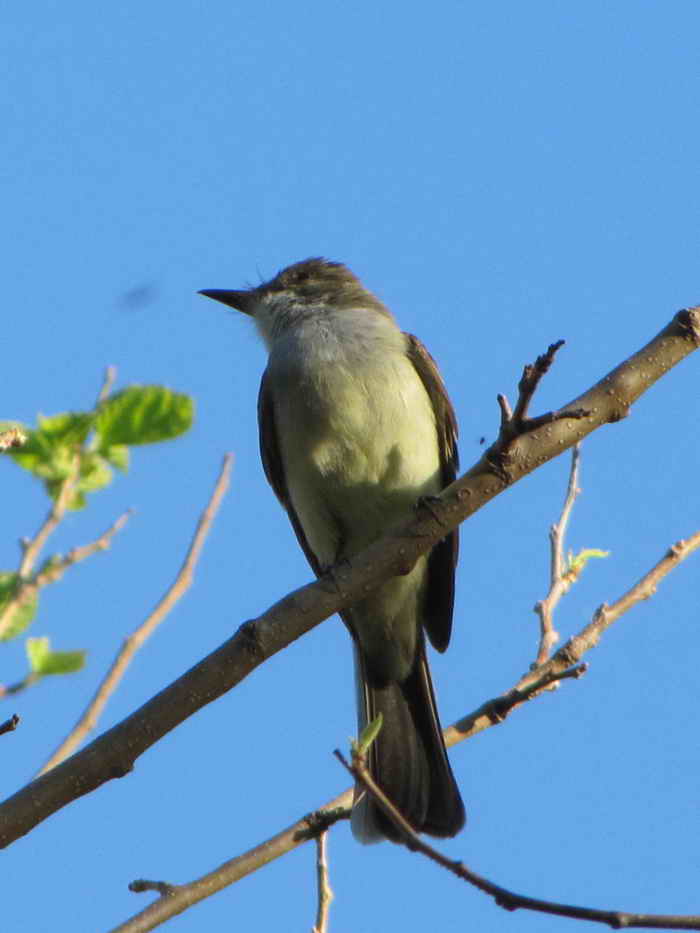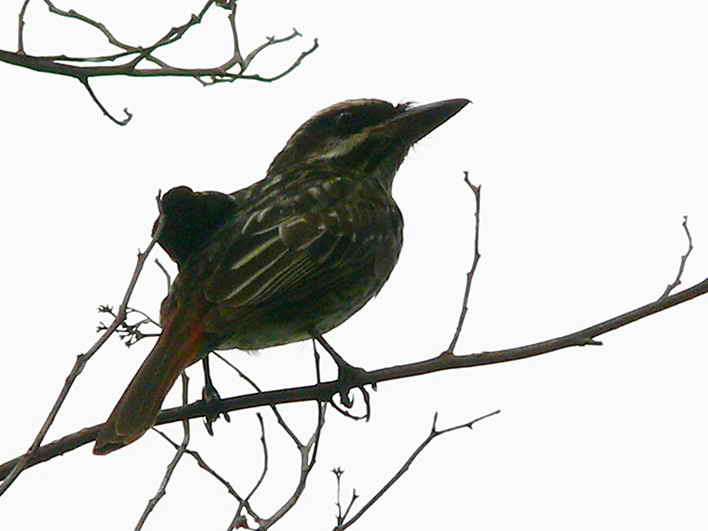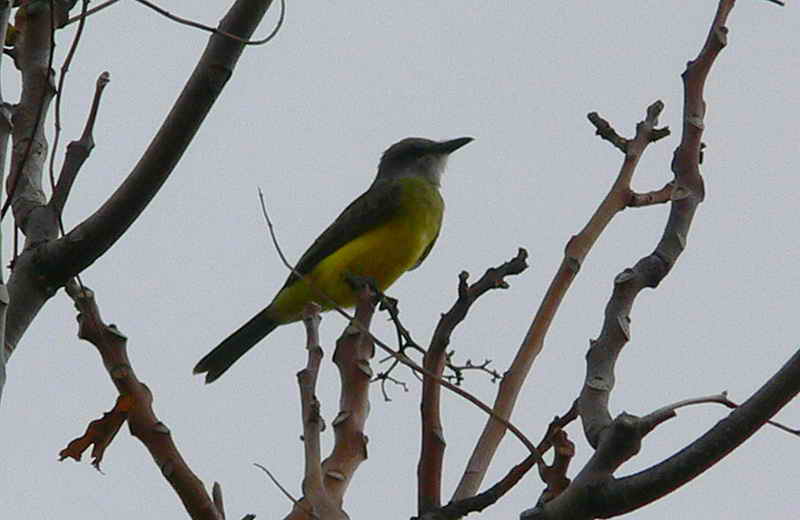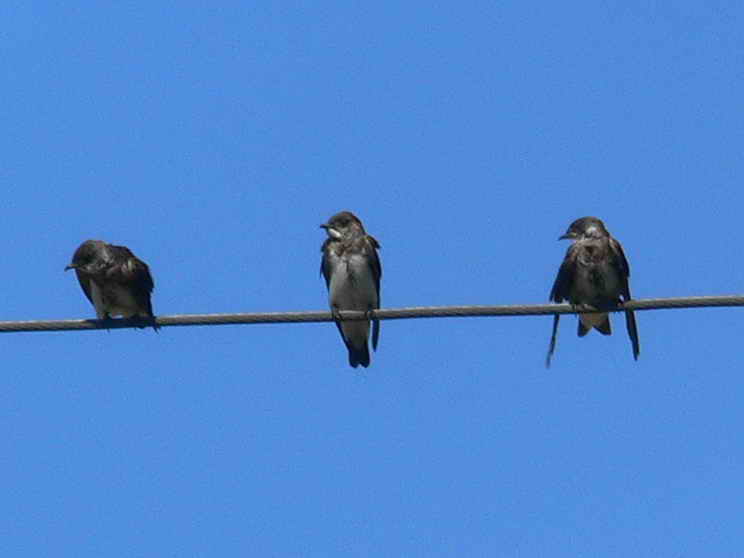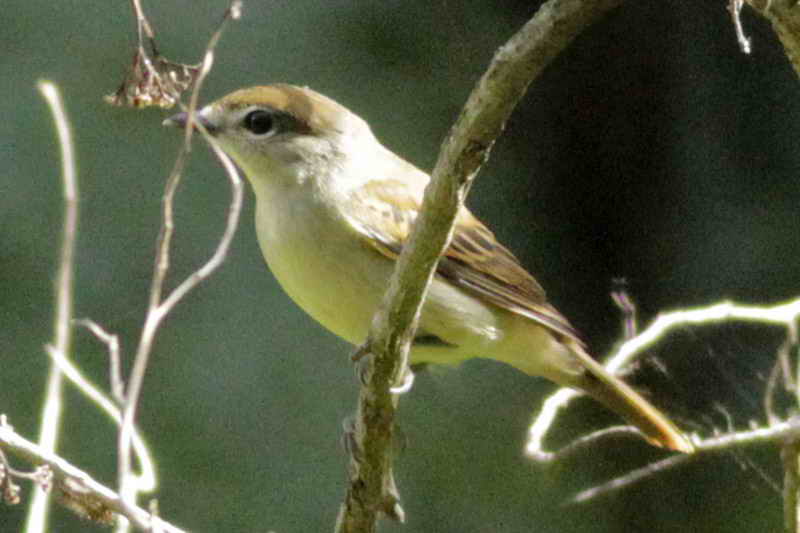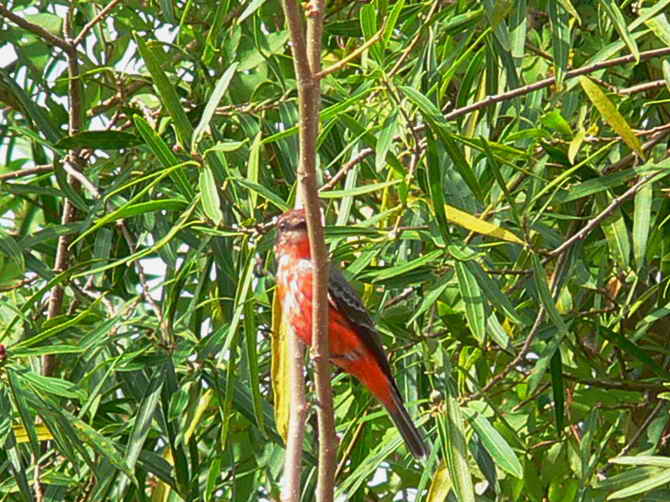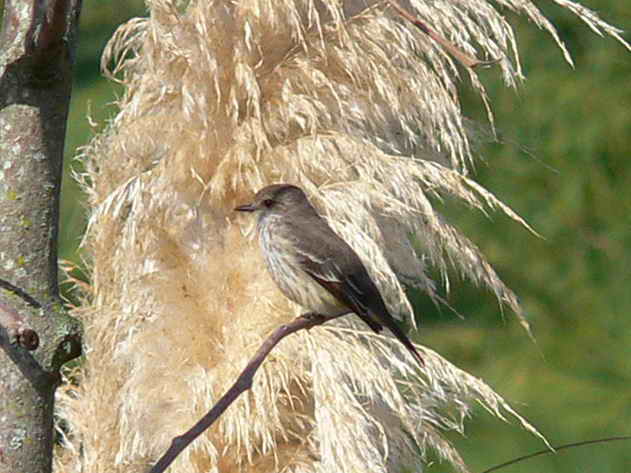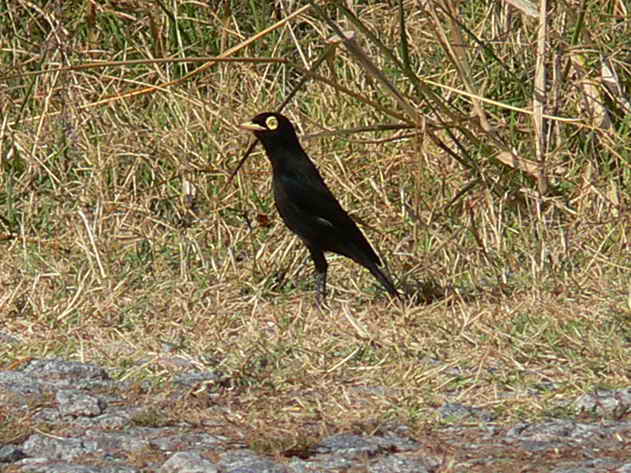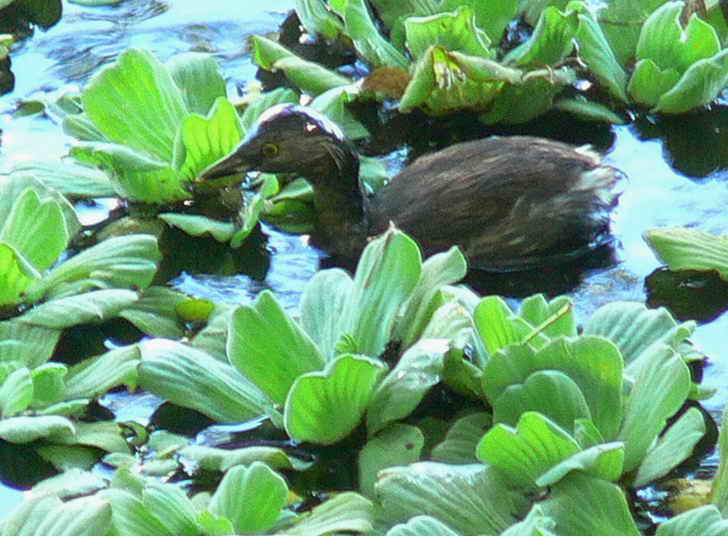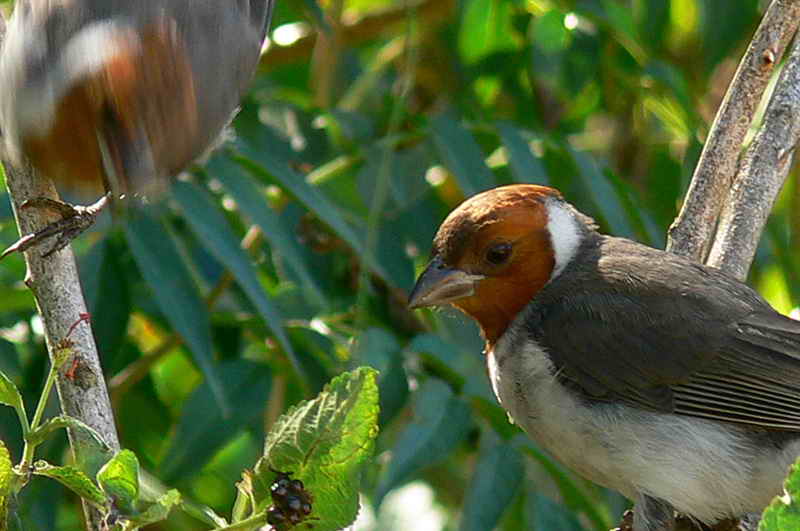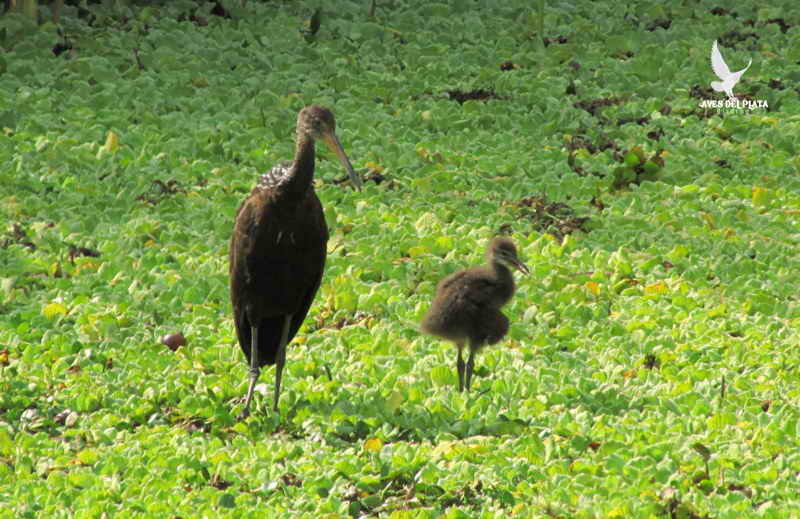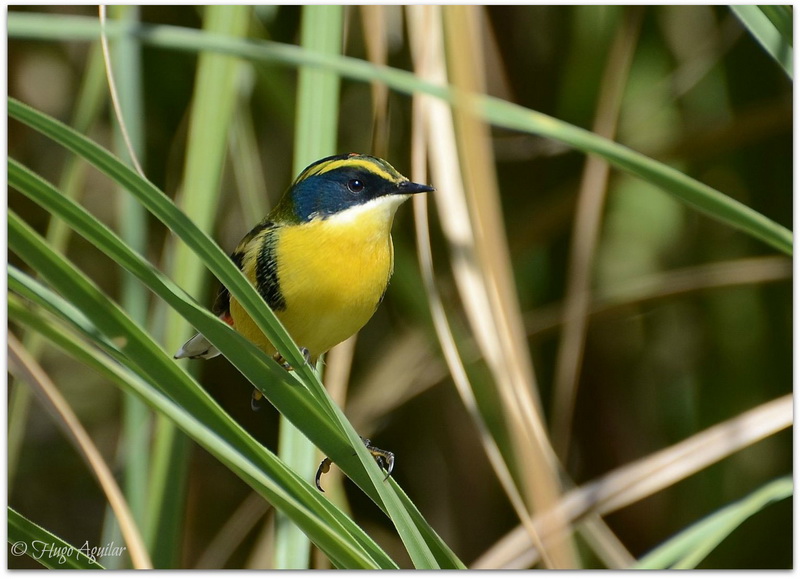News - April 2015
Buff-winged Cinclodes
Cinclodes fuscus
30-04-15 © Claudia y Diego Bastías
| On the last day of April Diego Bastías, Walter and Manuel saw a male Red-crested Finch Coryphospingus cucullatus, a female Hepatic Tanager Piranga flava and a Chotoy Spinetail Schoeniophylax phryganophilus |
New butterfly species
Though its area of ditribution is the northeast of Argentina, this butterfly is considered to have a broader distribution. Its small size and colouring contributes to its passing unnoticed. Almost nothing is known about this butterfly. There is one record from Martín García Island, another from Punta Lara and this one from the reserve.
The three white egrets at Coypu Pond
This beetle belongs into the family Dytiscidae, which are all aquatic. They spend their biological cycle in aquatic environments and are carnivores. Its body is hidrodinamyc and it has got hairs on its rear legs to swim more efficiently. They keep the air underneath their elytra, which are the hardened forewings which function like a case for the hindwings. When they need to get more air they go up to the surface exposing their rear part first. Though they are aquatic their wings are fully developed and can fly very well.
At wild peaVigna adenantha
Limpkin
Aramus guarauna
04-04-15 © Claudia y Tito Di Mauro
New access at Viamonte 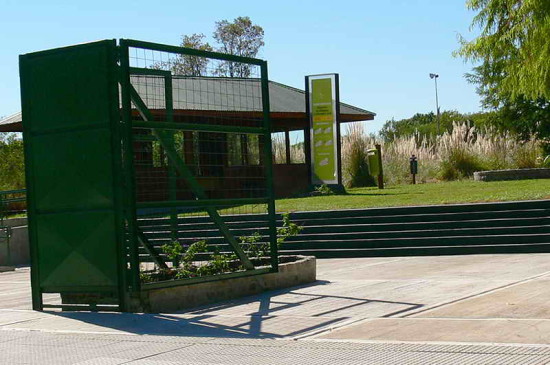 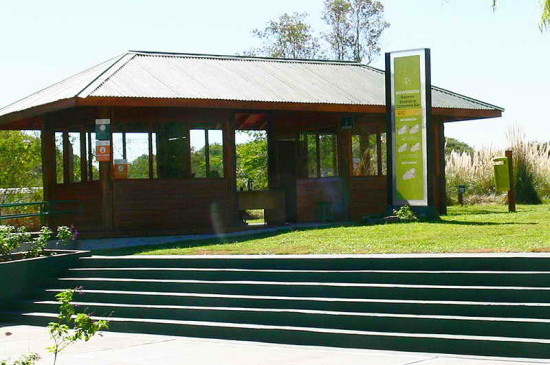 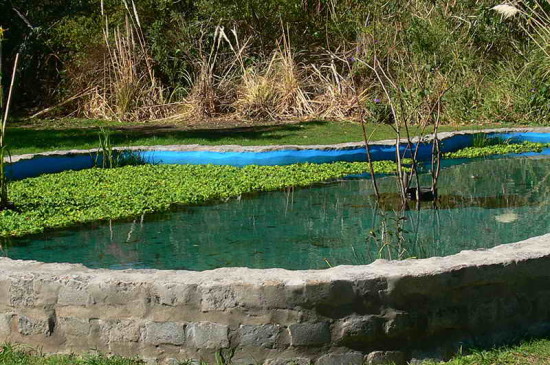  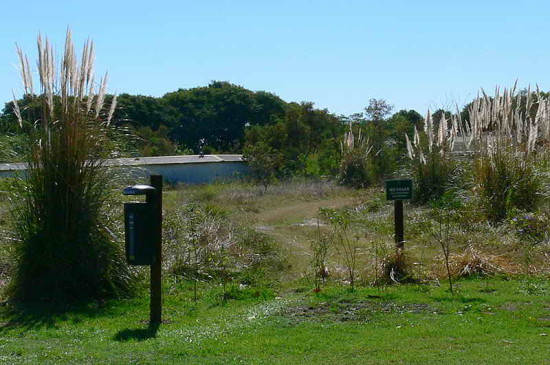 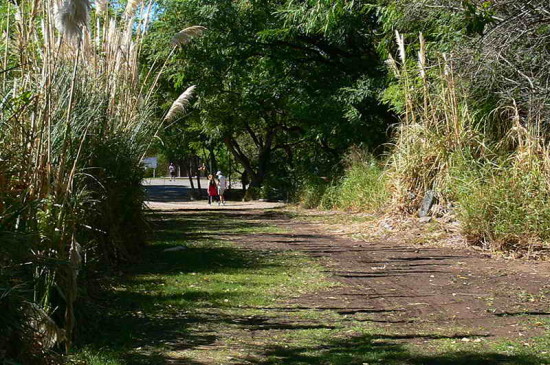 The new access at Viamonte is already open to visitors © Sergio Cusano |
Works  Ditch to lay the cable for the bomb © Sergio Cusano Ditch to lay the cable for the bomb © Sergio Cusano |
Limpkin
Aramus guarauna
19-04-15 © Cora Rimoldi
We looked for the bird vocalizing. It was this young limpkin calling
Lutrine opossum (Lutreolina crassicaudata)
Lutreolina crassicaudata
19-04-15 © J. Simón Tagtachian
Photos in video format
Rosy-billed Pochard
Netta peposaca
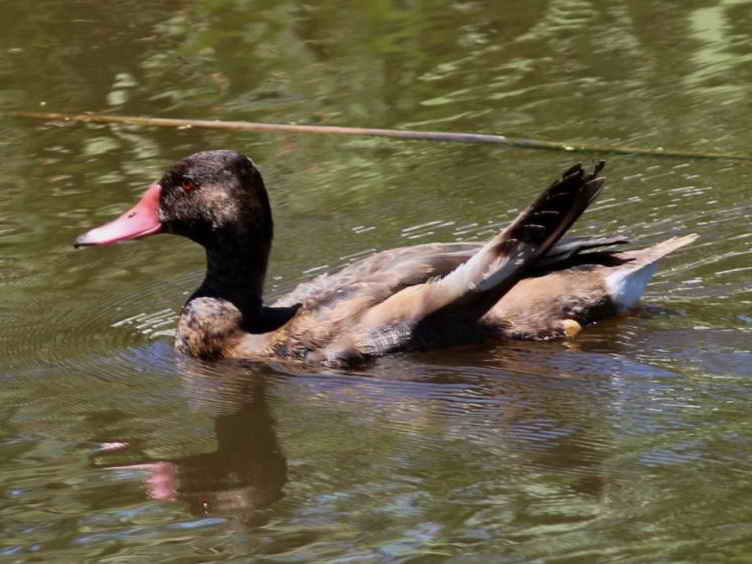
03-01-15 © Carlos González Ledo
Several young male rosy-billed pochards can be seen in the pond. If one pays attention we'll see they are in different stages to become male adults. The bill is rosier and the head and neck are darker. And this individual has a wounded wing.
Scarlet-headed Blackbird
Amblyramphus holosericeus
17-04-15 © Claudia y Diego Bastías
Nueva polilla
El bicho canasto pertenece a la familia Psychidae, que se caracteriza por estos canastos que las larvas construyen con seda y palitos de las plantas hospederas. Una vez construido no lo abandona más. En el último estadio de larva lo fija a una rama. Ahí permanece hasta la aparición del adulto. Si el adulto es una hembra queda recluida en el cesto porque no tiene alas y no vuela. El macho, en cambio, sale del canasto en busca de hembras a quienes fecunda en el nido. Las hembras ponen unos 1000 huevos que permanecen en el cesto hasta que se convierten en larvas. Estas salen del canasto hasta la vegetación y poco tiempo después comienzan a construir el canasto.
Mariposas y polillas de abril
Ash-colored Cuckoo
Coccycua cinerea
15-04-15 © Claudia y Diego Bastías
The birds and the machine
White-tufted Grebe
Rollandia rolland
11-04-15 © Silvia Loiacono
Limpkin
Aramus guarauna
24-03-15 © Claudia y Tito Di Mauro
04-04-15 © Claudia y Tito Di Mauro
The limpkin keeps growing and is learning how to eat. First and second part
[viedo id="285" options="name,description,photographer" size="large"]
Green Kingfisher
Chloroceryle americana
04-04-15 © Claudia y Tito Di Mauro
First the female preening herself and then the male perched with the typical flip of the tail
The twists and turns of the Straneck's tyrannulet
Two among all the tyrannulets are very much alike - Serpophaga subcristata and Serpophaga munda. They dominated the scene when Berlioz described a third species resembling the previous ones: Serpophaga griseiceps in 1959. More than twenty years later new investigations determined that this tyrannulet Serpophaga griseiceps was the juvenile form of Serpophaga munda and again the number was reduced to the two initial tyrannulets.
In 1993 Straneck unifes Serpophaga subcristata and Serpophaga munda since they had the same vocalization. So the result was Serpophaga subcristata subcristata and Serpophaga subcristata munda as subspecies. But he describes a new species which does have a different song. The characteristics of this new tyrannulet coincided with the Berlioz's description of Serpophaga griseiceps. So Straneck recovers the name Serpophaga griseiceps. In 2004 the fusion of both Serpophaga griseiceps and Serpophaga munda was convalidated only on the grounds of the skins. In 2007 Straneck explains the flaws of this work and at the same time formally describes this tyrannulet as Serpophaga griseicapilla since it differs both in vocalization, size and crown. In Spanish it is called piojito trinador and in English is known as Straneck’s Tyrannulet, after Straneck. Something unusual since names are not given after living ornithologists.
Straneck's Tyrannulet
Serpophaga griseicapilla
10-04-15 © Claudia y Diego Bastías
The Straneck's tyrannulet is one of the winter visitors that has already arrived. Though it is not seen in the video, it can be perfectly heard. This tyrannulet is very much like the White-crested Tyrannulet Serpophaga subcristata which is a resident bird. A slight difference in size -the white-crested is one cm longer on average- and the crown of the Straneck's Tyrannulet has not or has less white than that of the White-crested Tyrannulet. These two characteristics are very difficult to distinguish at a distance.
But two clues help: the most reliable is vocalizations since they are quite different and secondly season -Straneck's tyrannulet is a winter visitor and the White-crested tyrannulet is all year round. So the worst situation is the bird in winter and in silence.
Let's hear the voice of this tyrannulet
04-04-15 © Claudia y Tito Di Mauro
Double-collared Seedeater
Sporophila caerulescens
08-04-15 © Cora Rimoldi
New butterfly species


